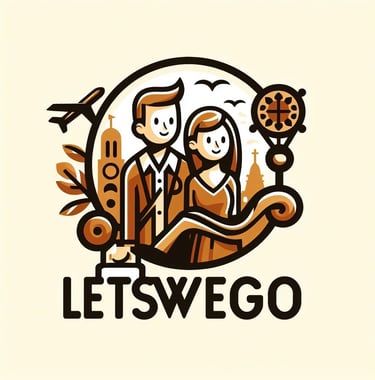Adriatic - Slovenia, Croatia, and Bosnia
Our second Rick Steves Tour - The Best of the Adriatic
EUROPE
10/14/20258 min read
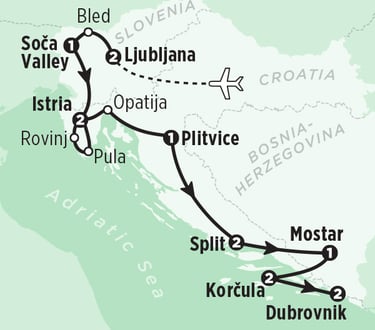

Just don't call it Eastern Europe...
Ljubljana, Slovenia
The Julian Alps and Soča River Valley:
Lake Bled and Kobarid
Slovenia's coast and the Istrian Peninsula into Croatia:
Piran, Pula, and Rovinj
Opatija and Plitvice
Split
Bosnia-Herzegovena:
Stolac and Mostar
Korčula
The Pelješac peninsula
Dubrovnik
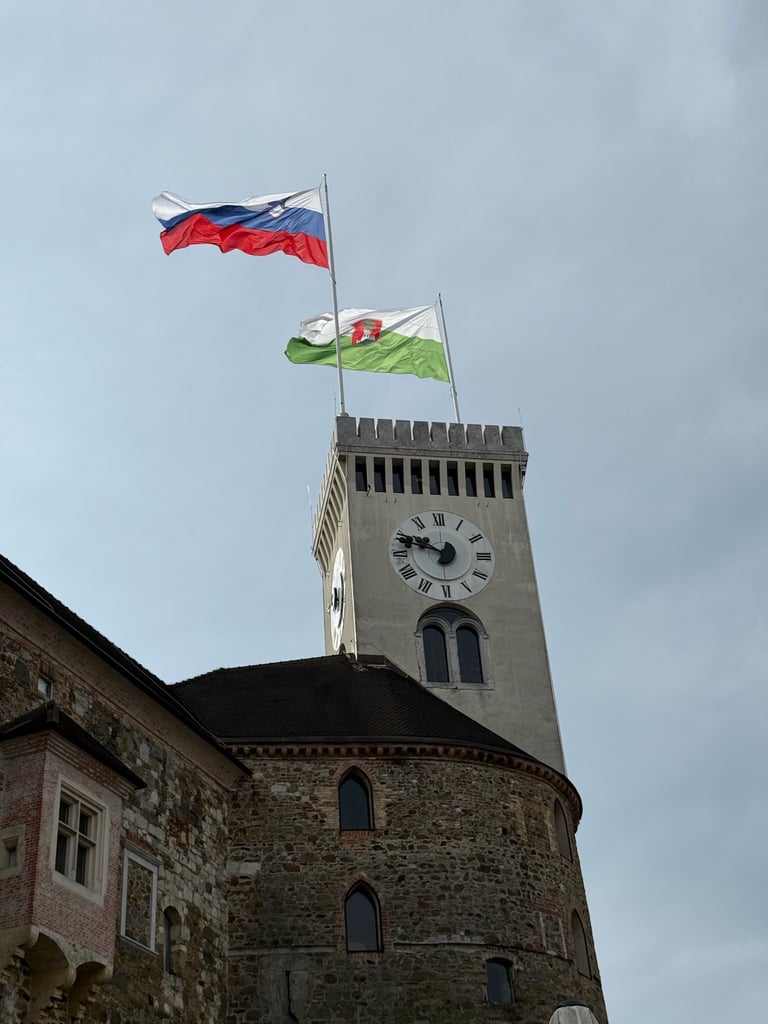
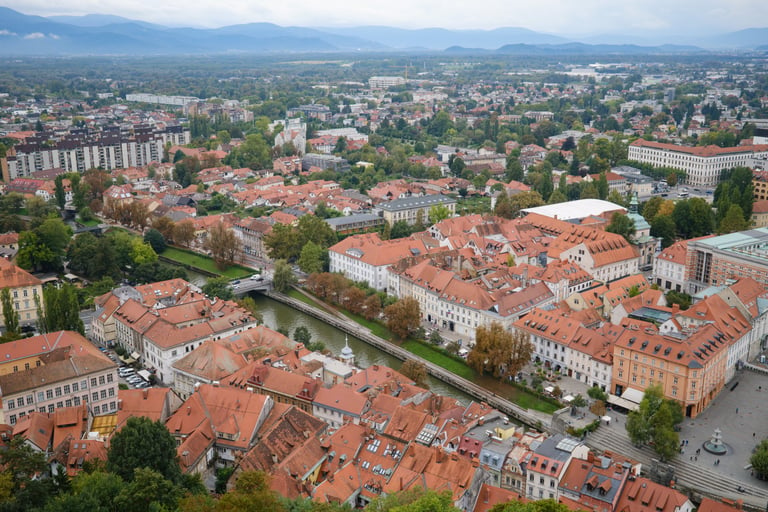
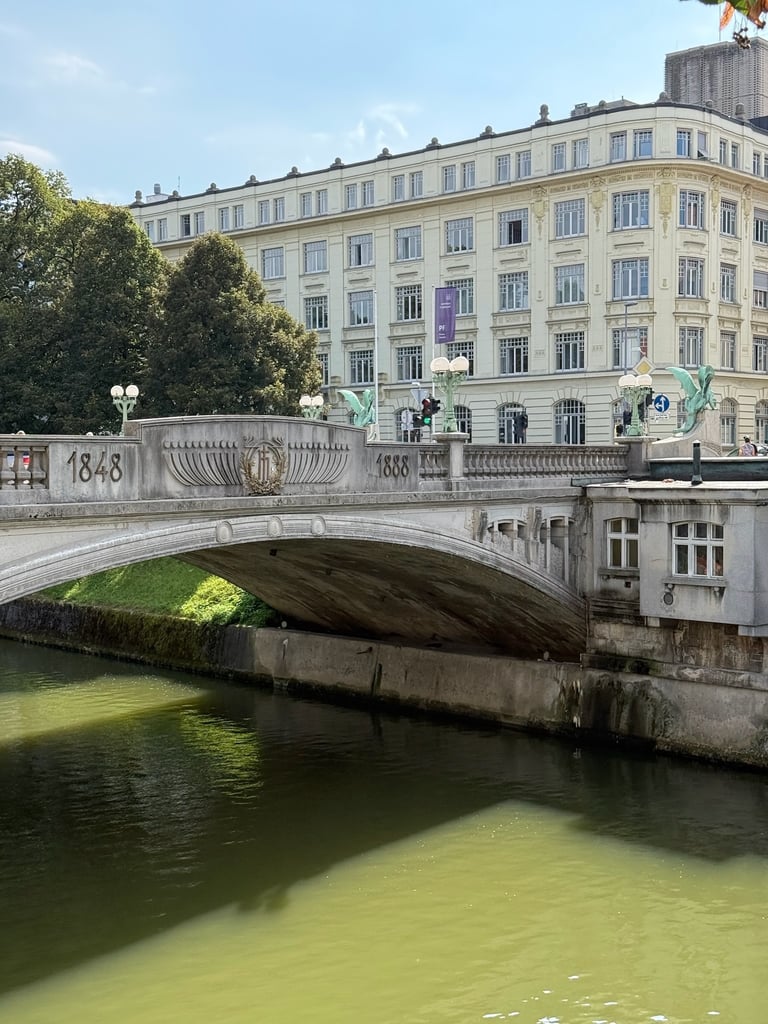
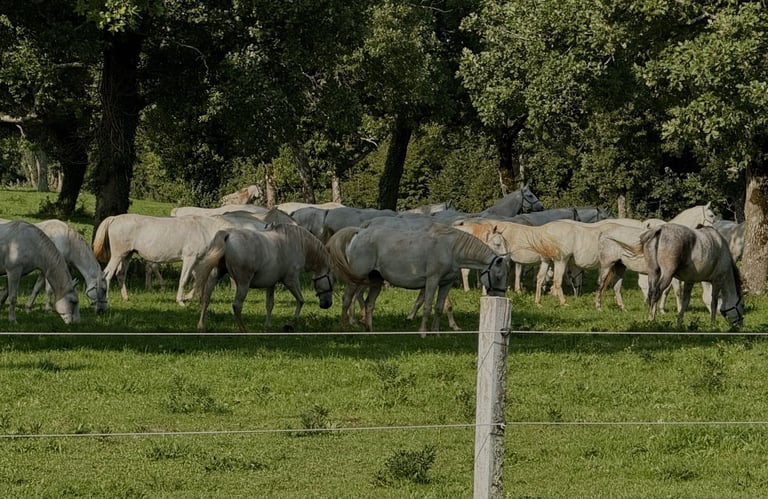
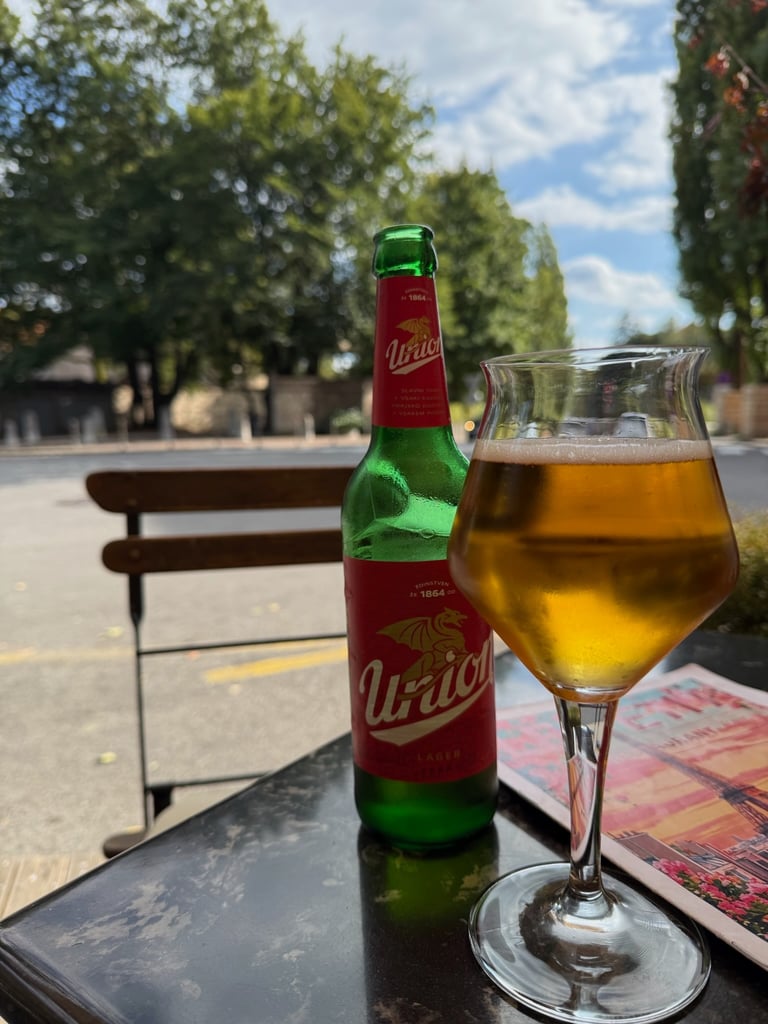
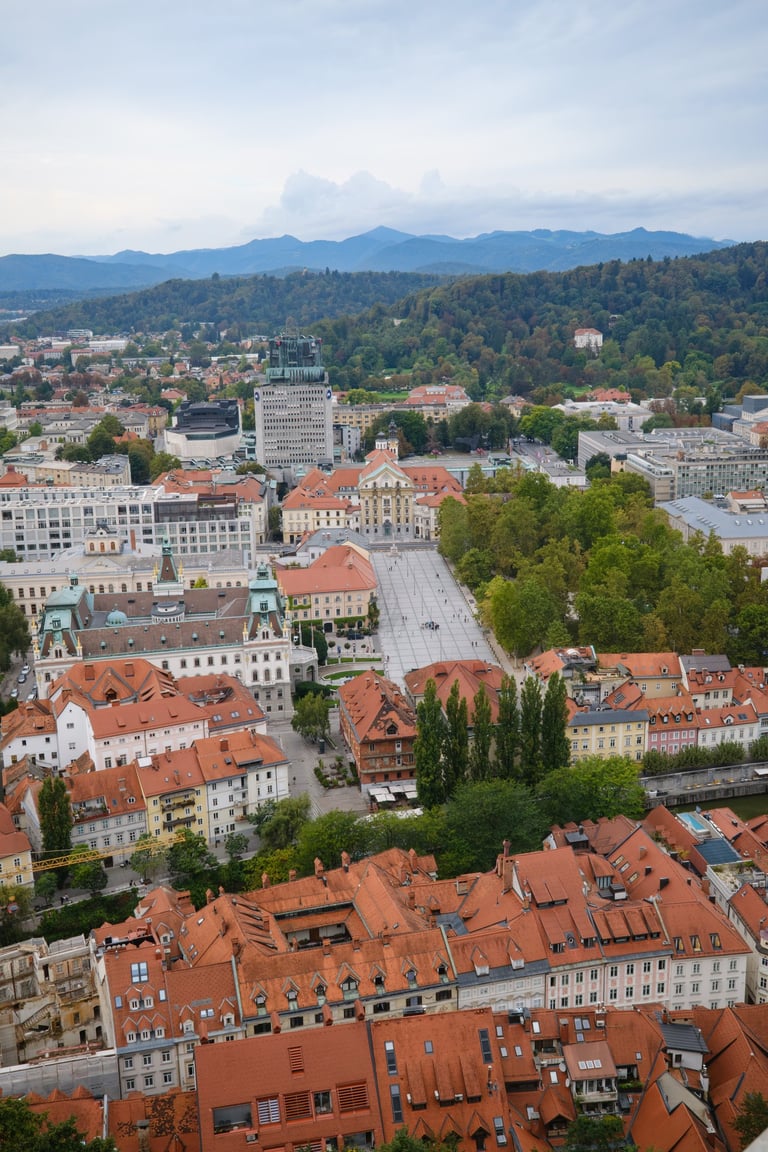
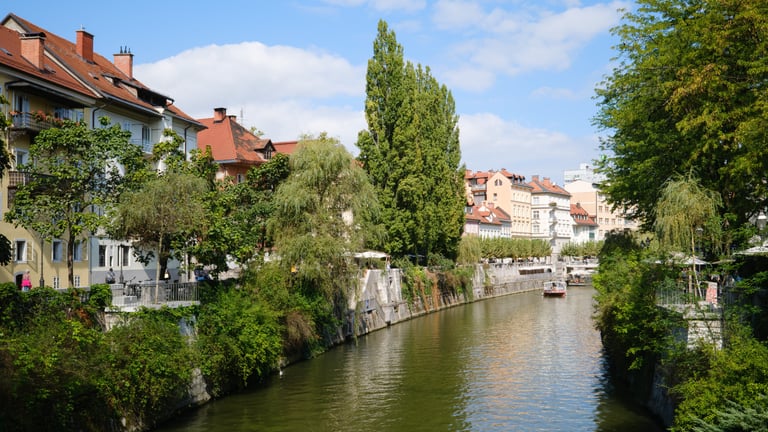
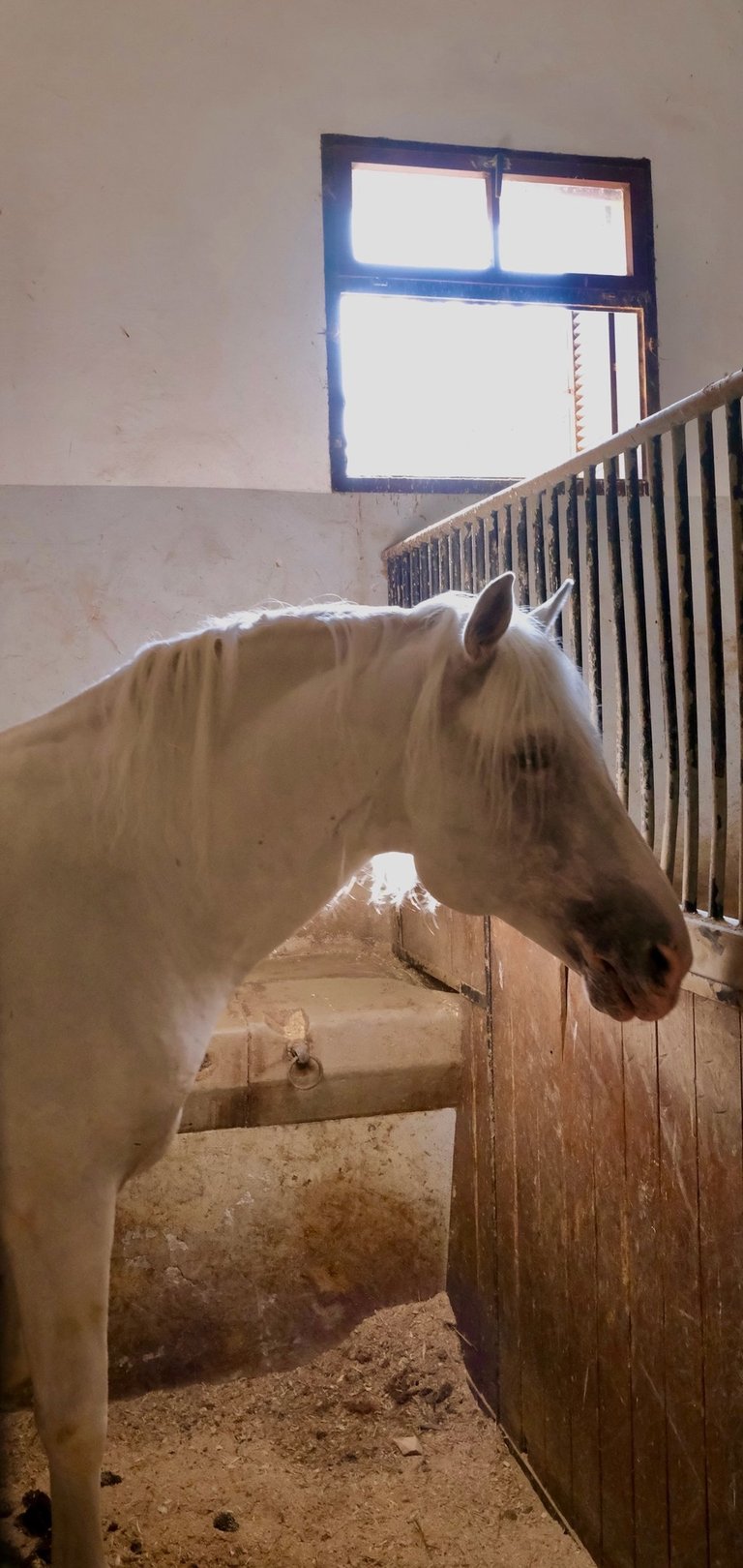
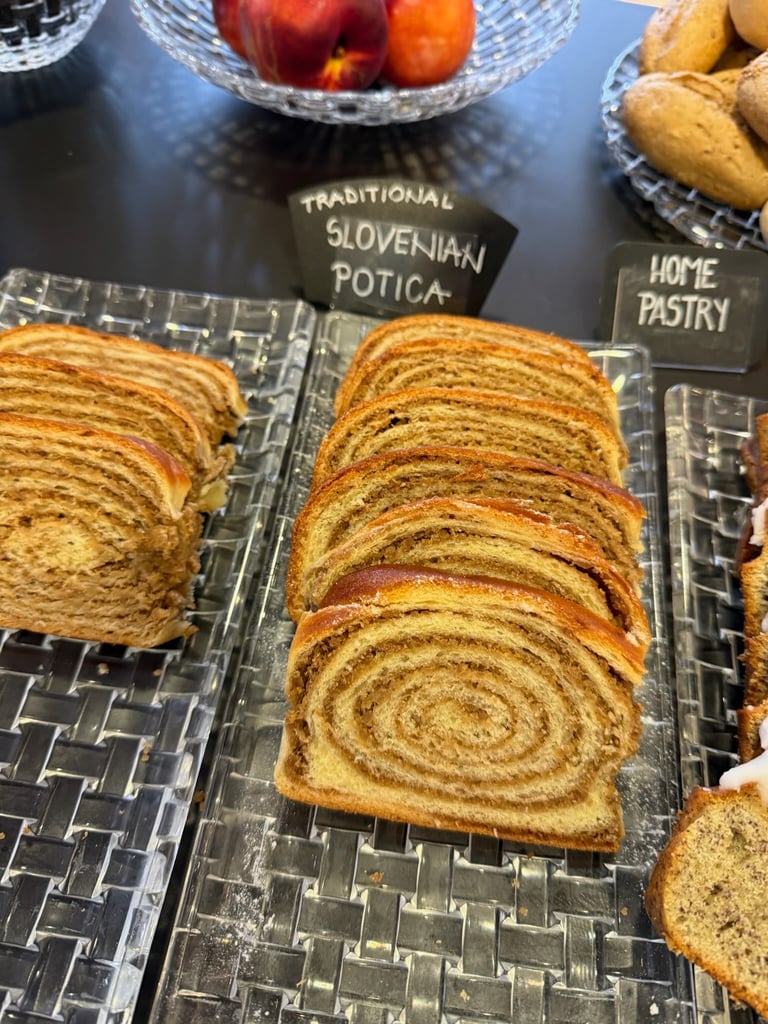









Ljubljana
Slovenia's capital city houses roughly 300k people in a country of ~2m (smaller than the Portland metro area). They have done a great job restoring Ljubljana castle and making it an everyday destination. Along with Center Rog (see below), the riverfront, and pedestrian center, Ljubljana is calm, quiet, and people centered. The locals give much of the credit to Ljubjana's favorite son and prolific architect, Jože Plečnik.
Our guide Marijan spoke positively of mayor Zoran Janković who according to Wikipedia is fairly controversial. Marijan talked of his skill in hiring qualified people and letting them do their jobs. ‘Hire urban planners and let them do urban planning’. Others raise questions about profiteering and payola. Does progress ever come without controversy (usually over what constitutes progress)? Do politicians who get things done always line their own pockets (or get accused of such)?
Just outside Ljubljana is Lipiča, home of the Lippizaner breeding facility once the exclusive breeder for the Spanish riding school in Vienna. It is beautiful and feels significant - grounded and permanent; with 380 horses on nearly 800 acres.
Meal highlights: Pizzeria Piccola for lunch: Excellent! Pizza with yellow tomato sauce, buffala mozzarella, arugula, and pršut (prosciutto). Dinner at Restavracija Breg, bistro sister to Michelin rated Atelie: Excellent carrot soup and gnocchi with beef ragout. They did a nice vegan eggplant for Kir. Veganika was fantastic. Lemon soup, artichokes, soba noodle bowl, bao buns. Great staff - very attentive. Coffee and cake was going to become a theme for the trip, starting with Potica. Union beer is a fine companion when people watching.
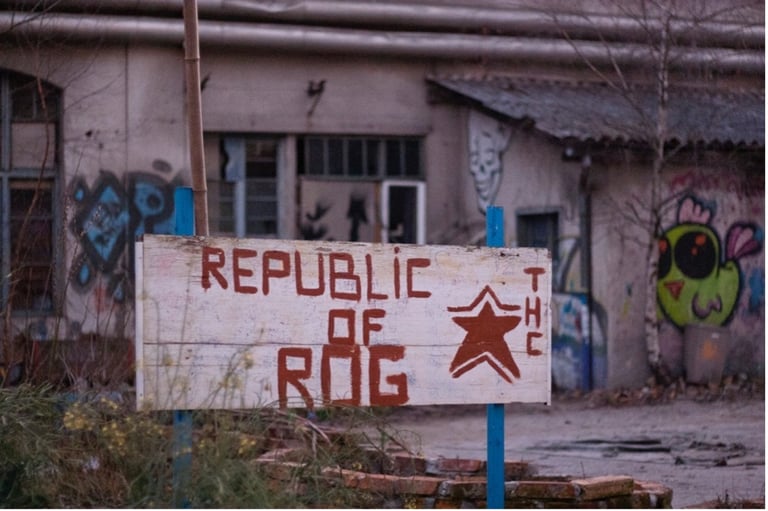
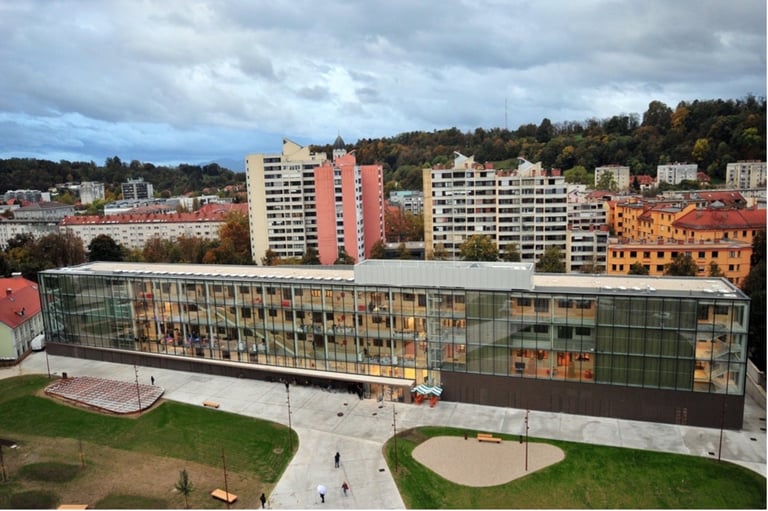
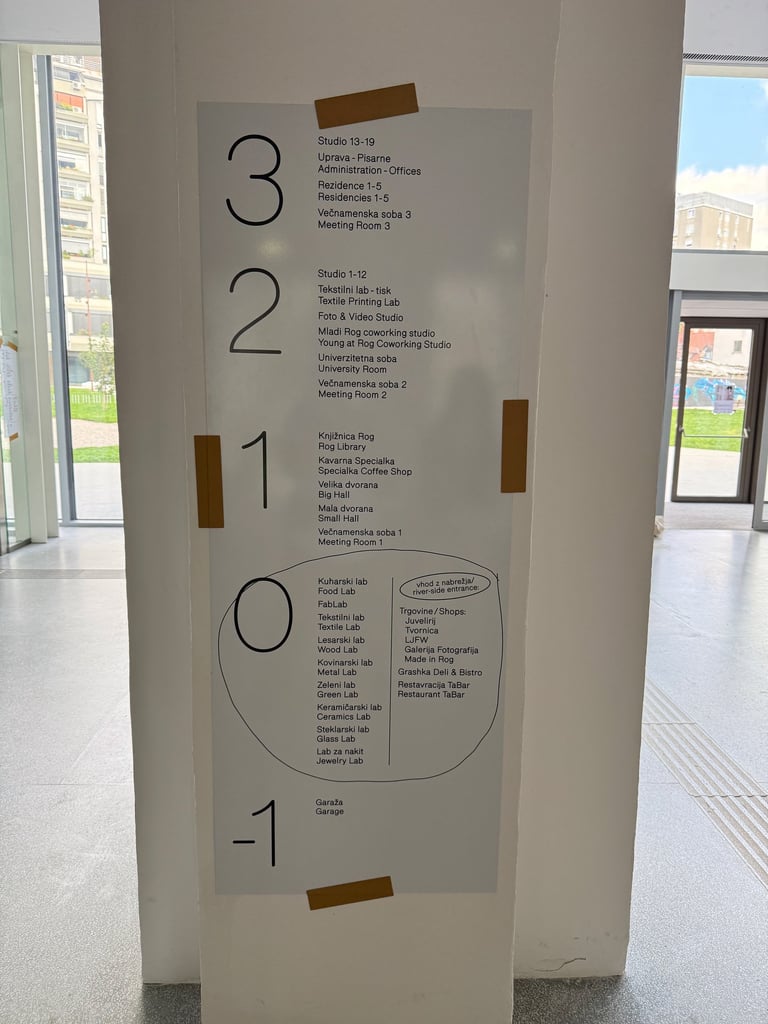
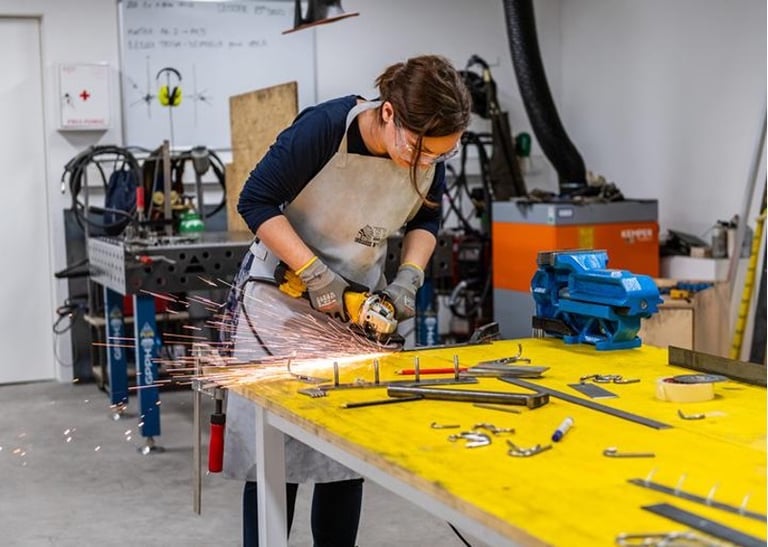
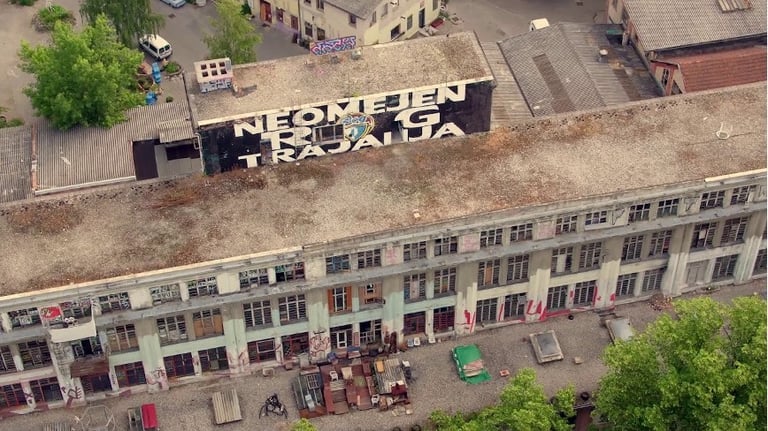
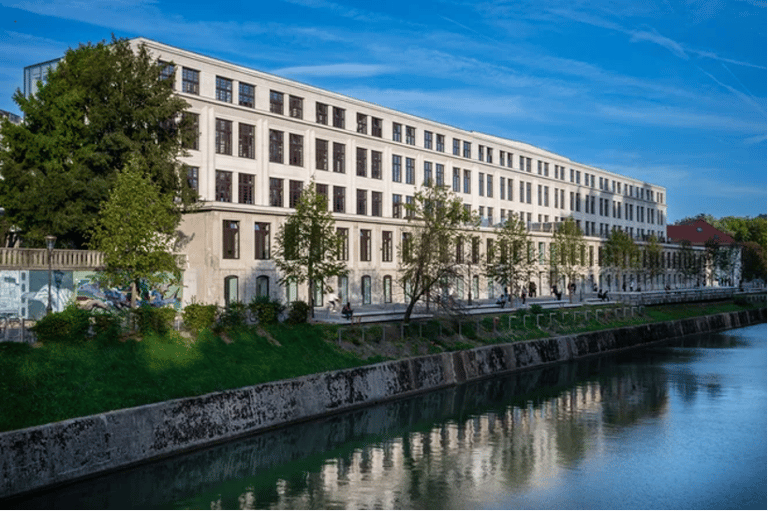
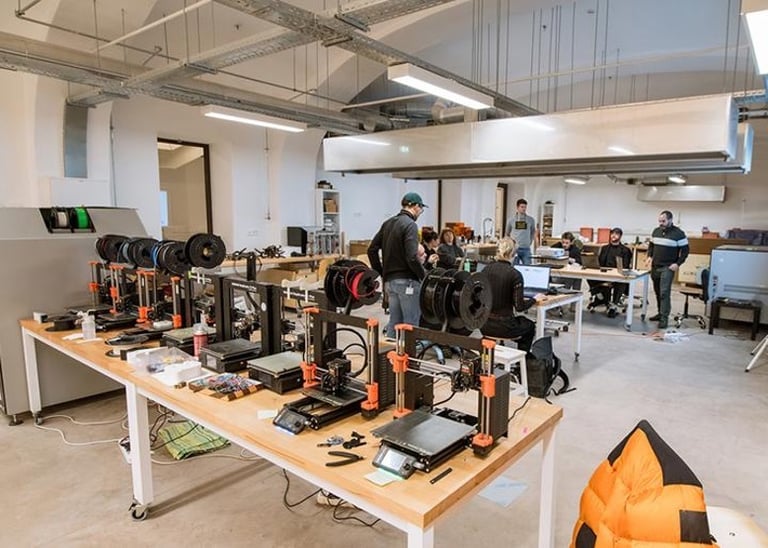
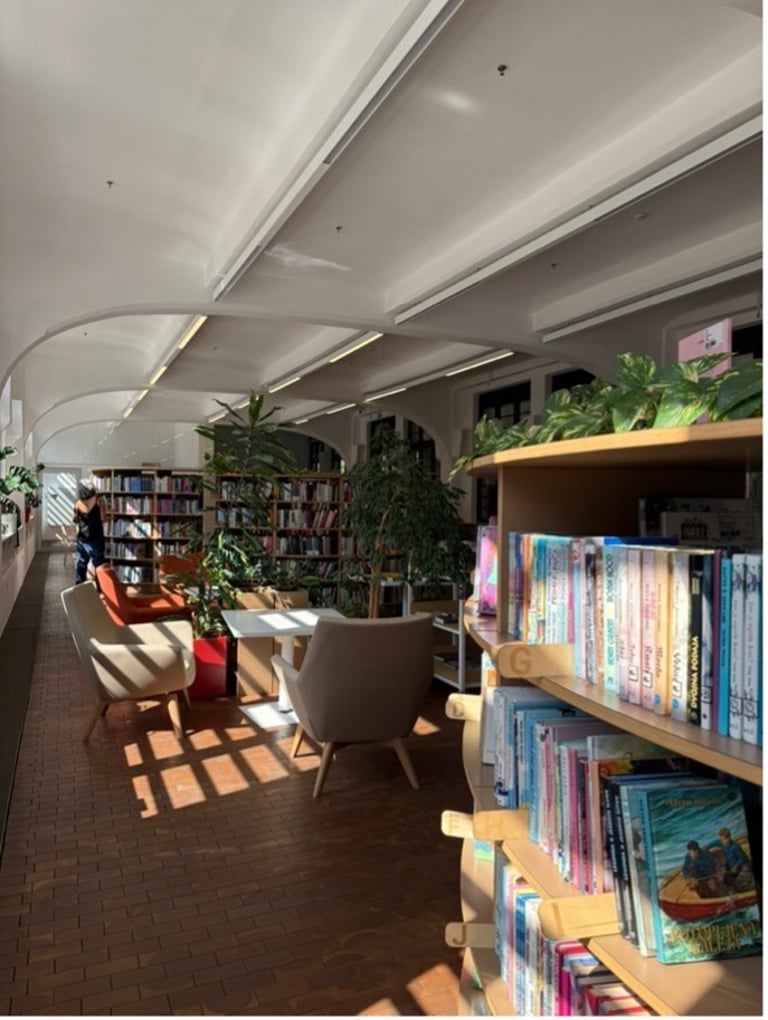








Center Rog
In their own words, "The Rog Centre is powered by urban handicraft traditions and state-of-the-art technology. This is a small town where old and new, designers of modern design and masters of traditional design come together from morning to night. crafts, geeks and bookworms, cooks, and metalworkers, architects and carpenters, engineers and curious people. The Rog Centre is the creative engine of Ljubljana and Slovenia.”
(History per Wikipedia) The Rog bicycle manufacturers built the factory in 1951 and used it until 1991, when the site became derelict. The factory complex was squatted in 2006 and kept the name Rog. The occupiers declared that "As a non-formal network of individuals we believe that our actions are completely legitimate and well-grounded, although, at the moment, lacking official permission". The center was run by assembly and functioned as both a cultural center for art and a self-managed social center. It hosted concerts, lectures, refugee support activities and other events. There was also a medical clinic for asylum seekers.
The center was used by many groups, such as Antifašistična fronta (Antifascist Front), Nevidni delavci sveta (Invisible Workers of the World), and the Anarcho-Queer-Feminist collective. Rog was evicted in January 2021 by the city council, which claimed it was empty and abandoned at the time. The city of Ljubljana then proceeded with plans to set up a cultural center called the Rog Centre in the former factory.
In my view, the center is now a wonderful space for creators, makers, co-workers, children, and students. Artist in residence space is allocated to those on refugee status and retail shops sell the products of many of the studio creators. Think of all the industrial space in the US that could be put to use this way...
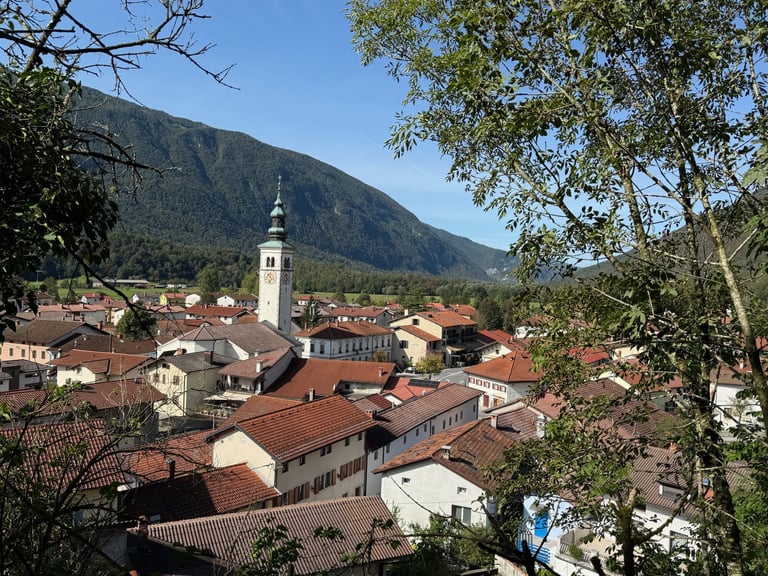
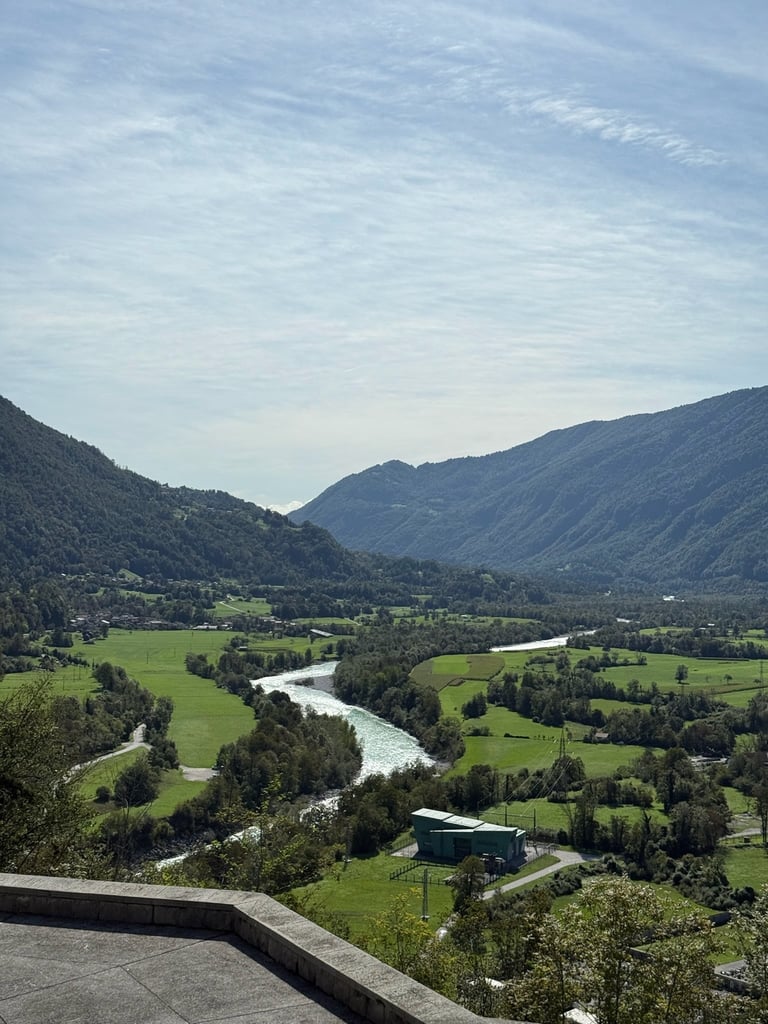
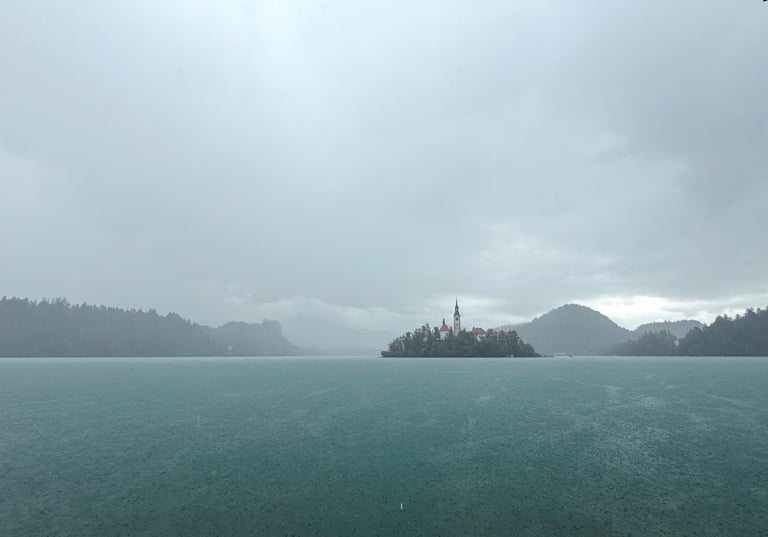
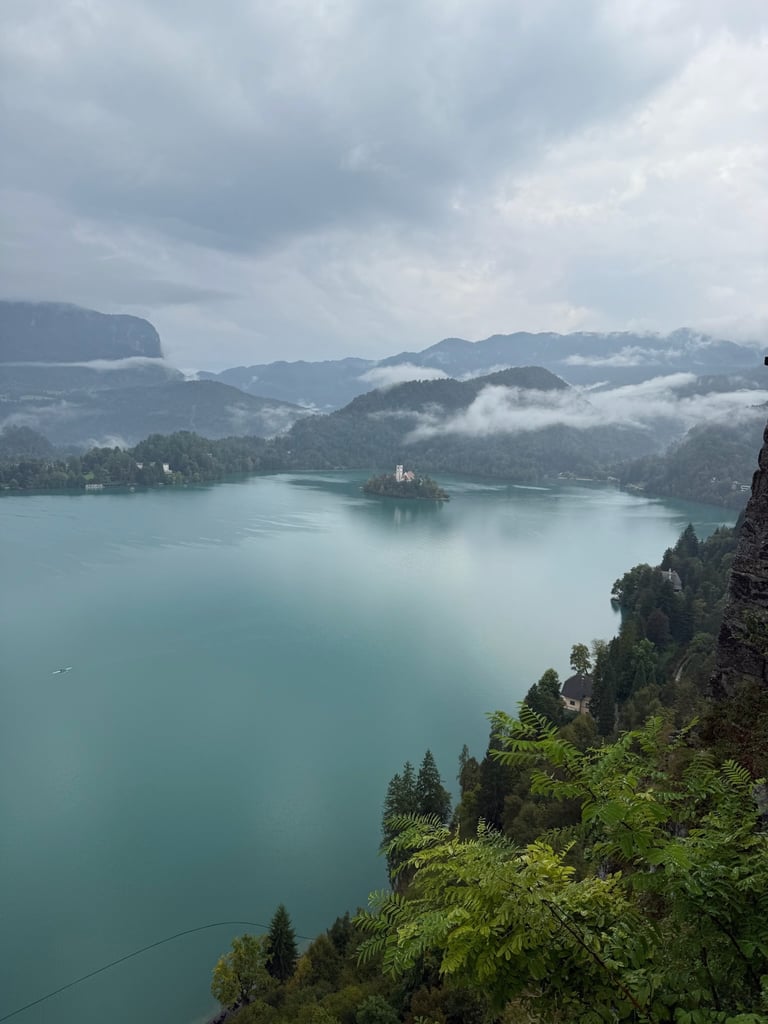
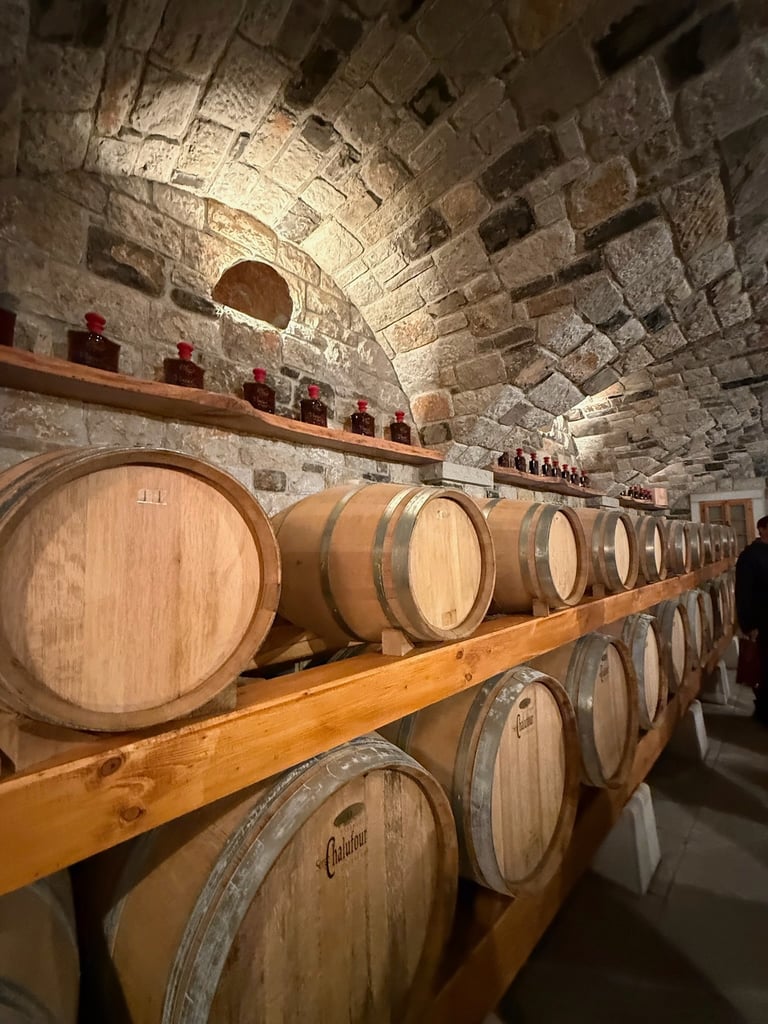
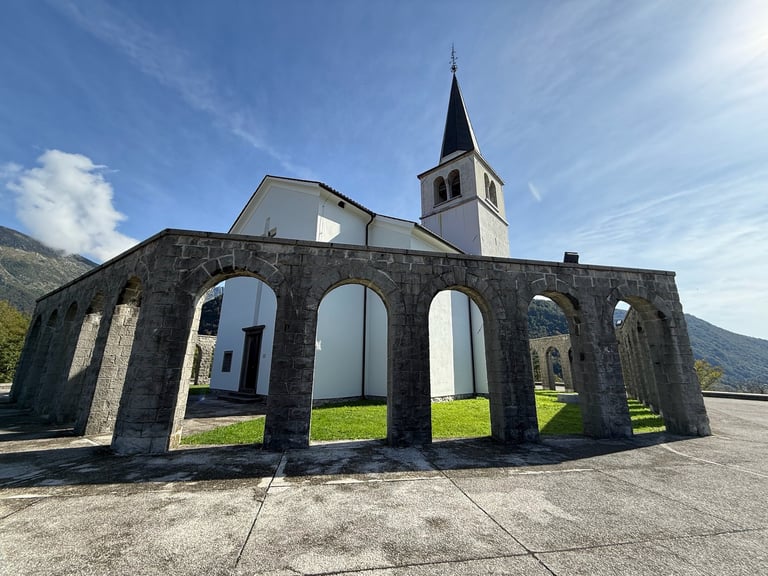
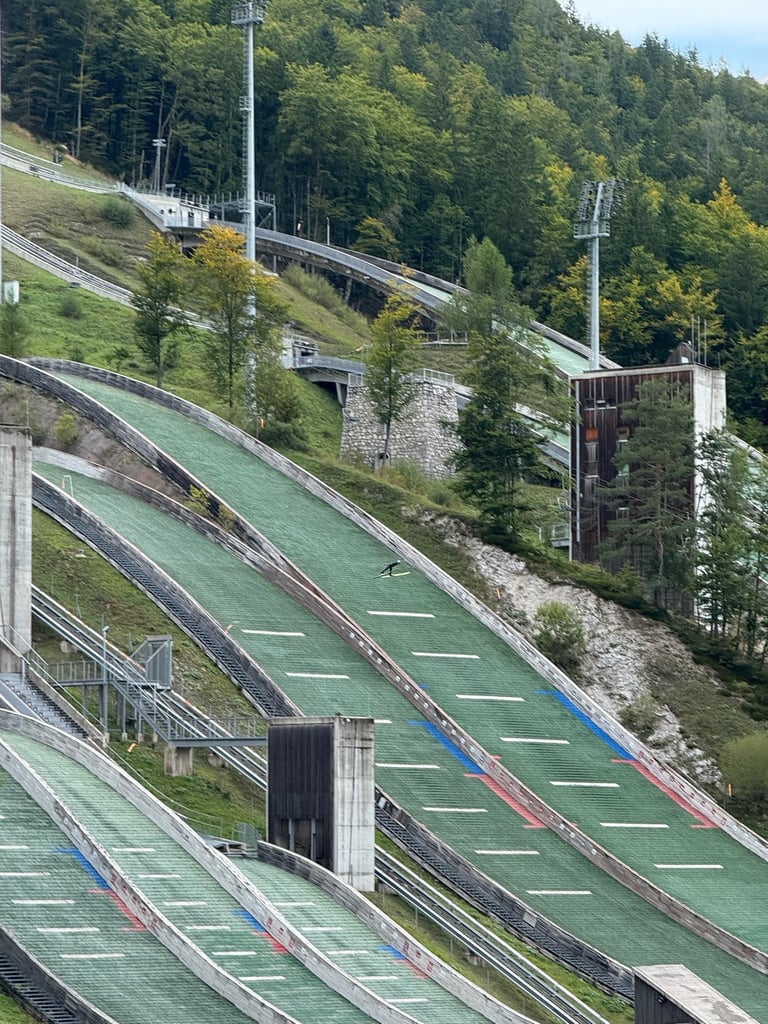
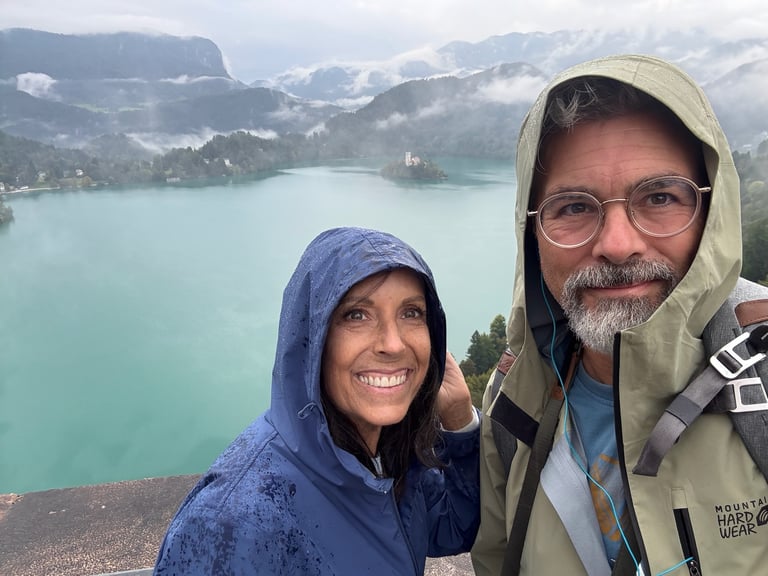
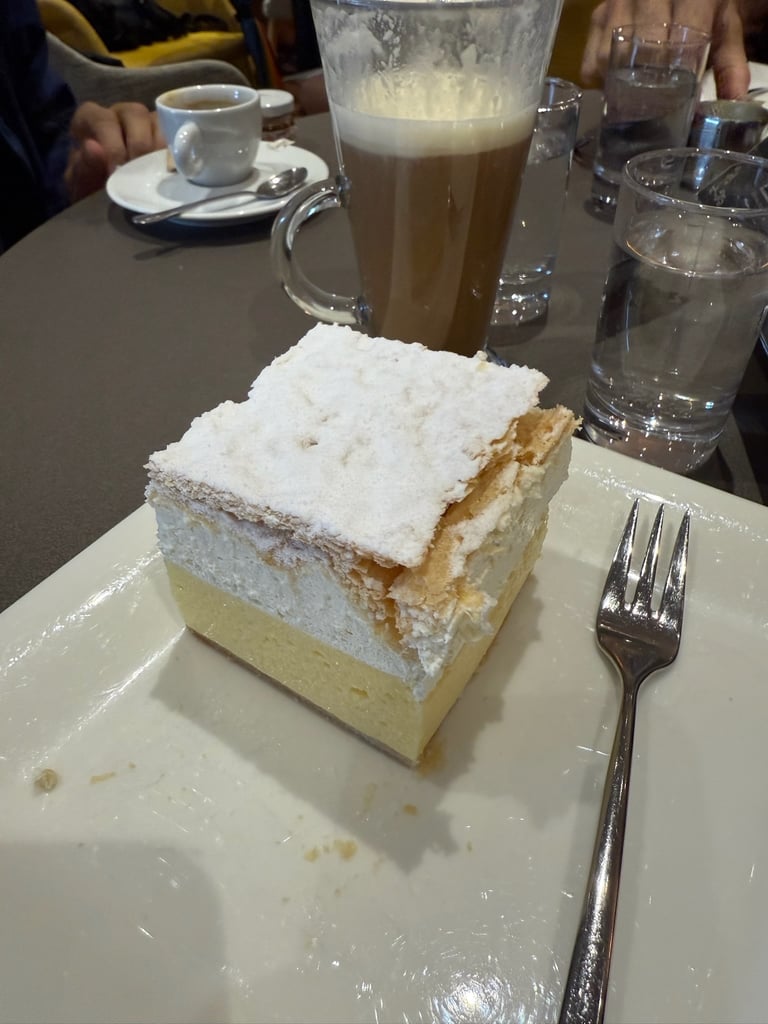
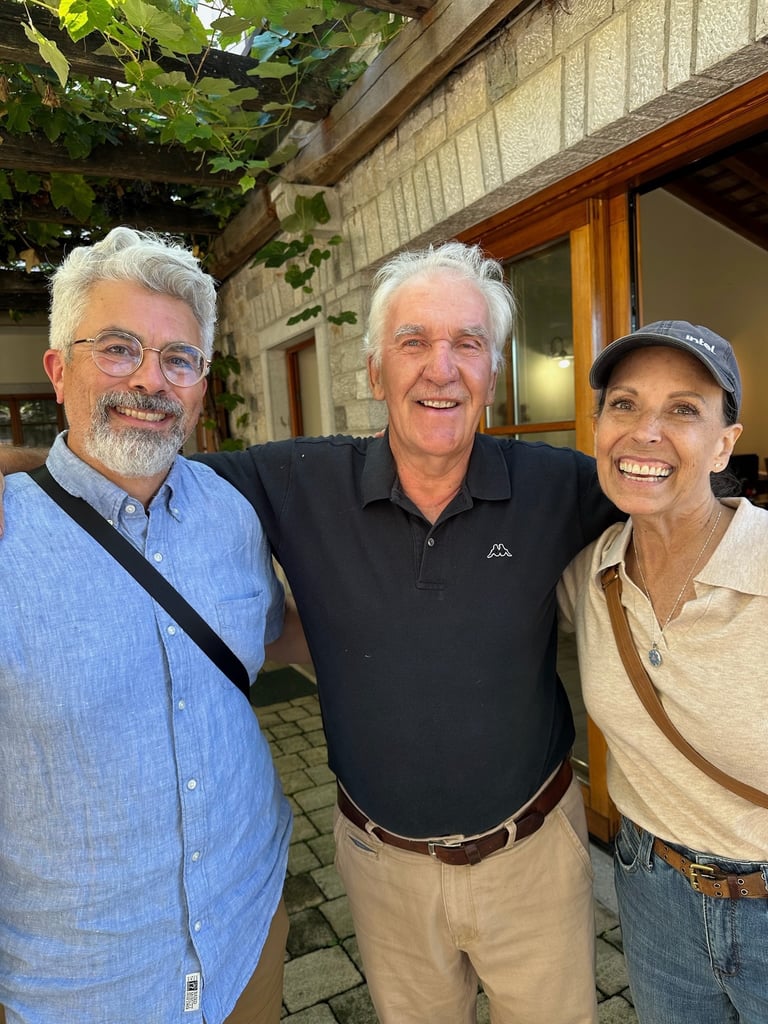










The Julian Alps and Soča River Valley
Just a short drive from Ljubljana takes you into the Julian Alps and Soča River Valley. We stopped at the very photogenic (usually) Lake Bled. It was memorable not just for the landscape but for the rain. It was great fun walking around the lake with new friends and getting soaked to the bone. It was also a treat visiting the Planica winter sports training facility - watching ski jumping practice on turf and going subterranean to see cross country skiing training on artificial snow. Nearby Bovec is the Adrenaline capital of Slovenia - river rapids, rock climbing, kayaking, biking, etc.
The World War 1 museum in Kobarid was memorable. By focusing on the futility of the fighting, how little the front lines moved during the battles, and how awful the conditions were, they send a very clear message about the absurdity of war. This area was known as Caporetto to the Italians, who lost thousands in avalanches on a day they call White Saint Lucy. Borders in this area were negotiable. Our guide's grandfather was Italian, father German, he's Yugoslavian, and his daughter is Slovenian. They have lived in the same house the whole time...
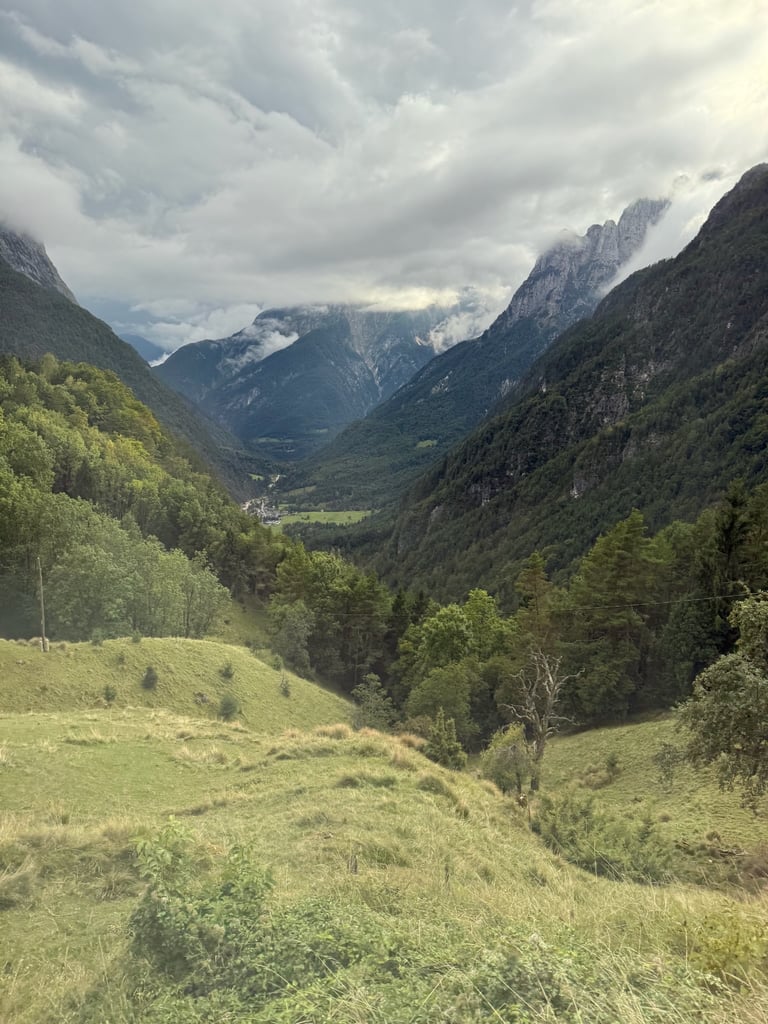

We had a wonderful visit, tasting and lunch with Boris Lisjak at his winery in Dutovlje. His passion for his wine and love for his family were contagious. The local terroir - and red wine - is called terran after the red, rocky soil in this region.
Meals: In addition to lunch with Boris we had a good lunch at Ostarija Peglez’n in Bled - soup, fries, grilled veggies. Then cream cake and Irish coffee (a theme emerging) at Kavarna Cafe where the cake was invented.

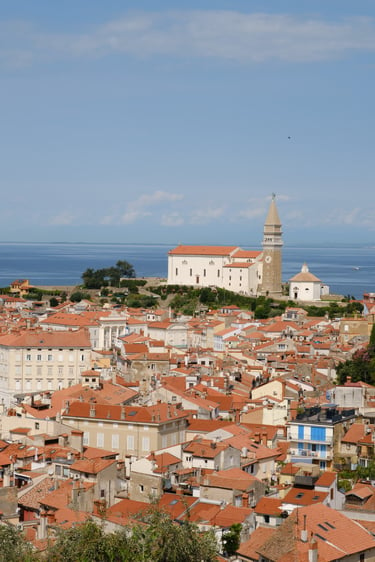
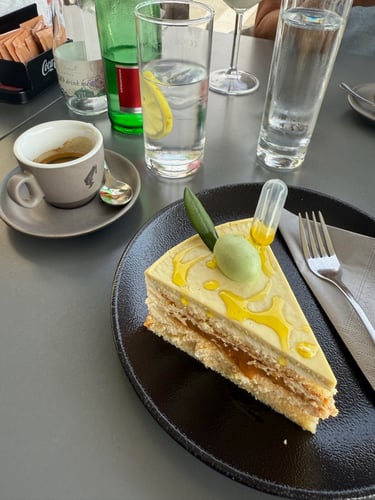
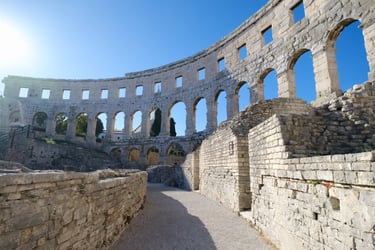
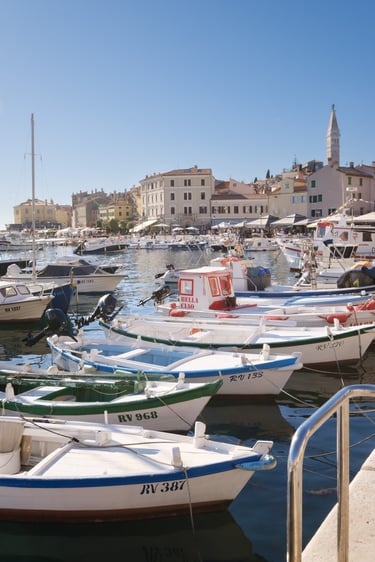
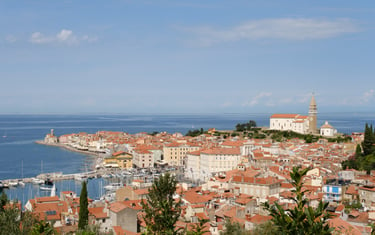
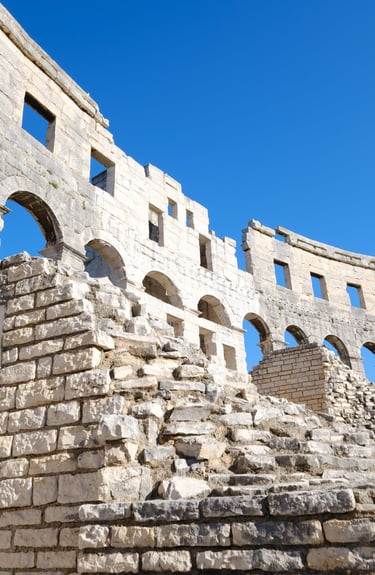
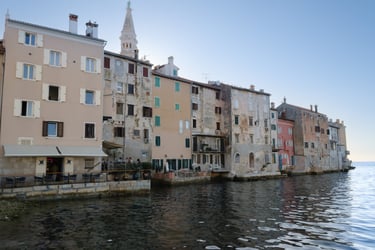
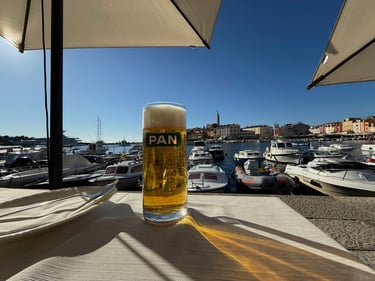
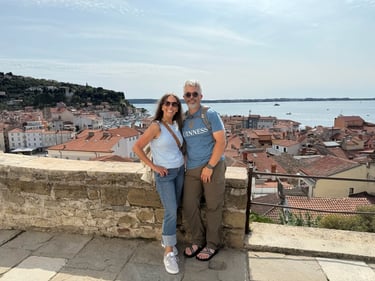
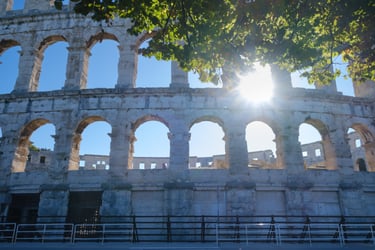
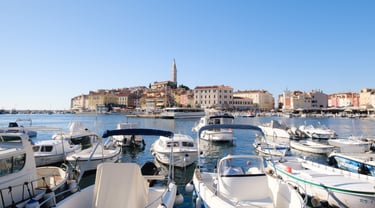
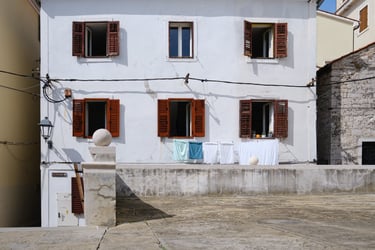












Slovenia's coast and the Istrian Peninsula
Piran, Pula, and Rovinj
Piran felt very Italian. You can see Grado across the bay and hop 30 mins down the road to Trieste. There is a square reminiscent of piazza San Marco in Venice (but in front of St. George's church in Piran instead). There is also a smaller version of St. Mark's Campanille.
Piran is known for its salt fields We tasted/bought excellent dark chocolate with local ‘salt flower’ finishing salt. (just the top-most layer in the bed). Spirulina was another interesting addition. It's fitting that the locals say “Salt is the sea that could not return to the sky.” We also tasted storte, an olive oil dessert with olive oil mousse, sponge cake, and caramel.
Our guide Gordonna, as many did on our trip, spoke fondly of Tito and his form of socialism. People emphasize that Yugoslavia was communist but not Soviet. The border was open. There were no bread lines. Shopping in Italy was commonplace. Italians visited Piran to shop and vacation.
Pula is a little more gritty as an industrial city (shipyard) in transition. There is a wonderfully intact Roman forum used for concerts and the Pula film festival. Rovinj is picturesque and quintessentially Adriatic.
Meals: We stayed at the excellent Hotel La Grisa in Bale and had a great dinner there as well as a nice dinner at Borghetto - Pork Istrian style, with pasta and mushroom sauce. Zucchini pasta for Kir. Another good Malvazia (local white wine)
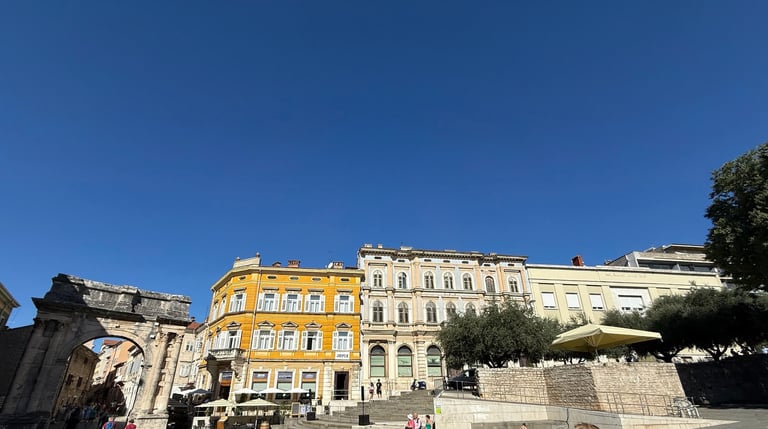

This photo is interesting in that it shows the history of Pula through architecture. From left to right: Roman, French, German, Yugoslavian (brutalist). We would definitely spend more time in Pula (and Split - coming up below...)
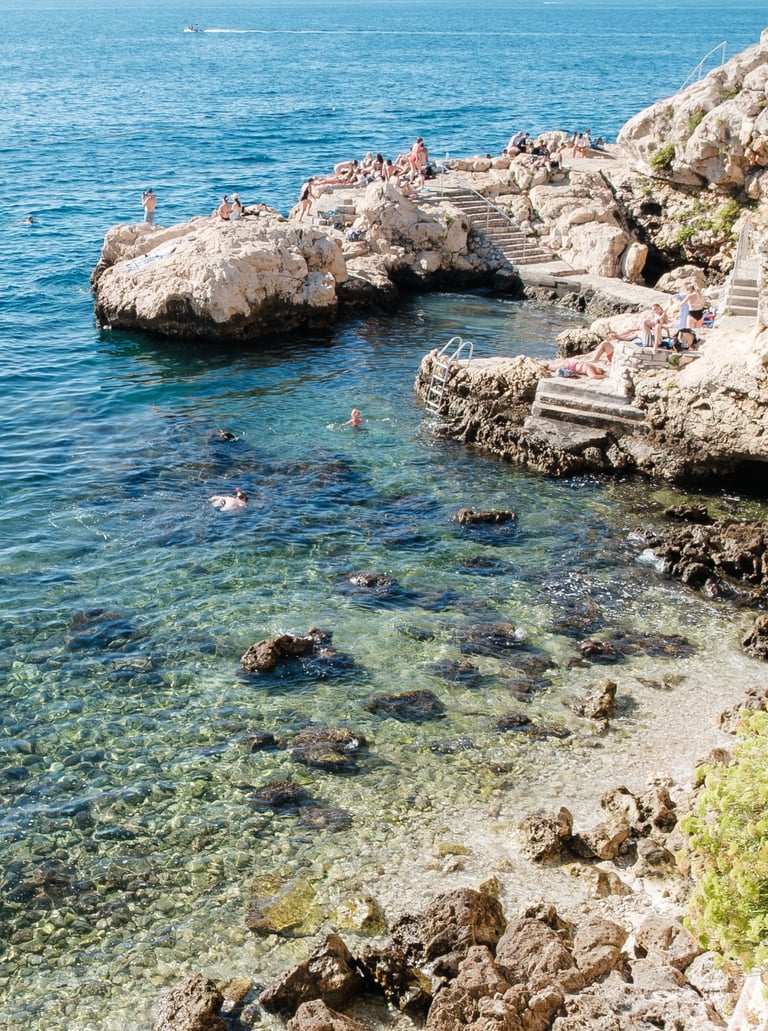
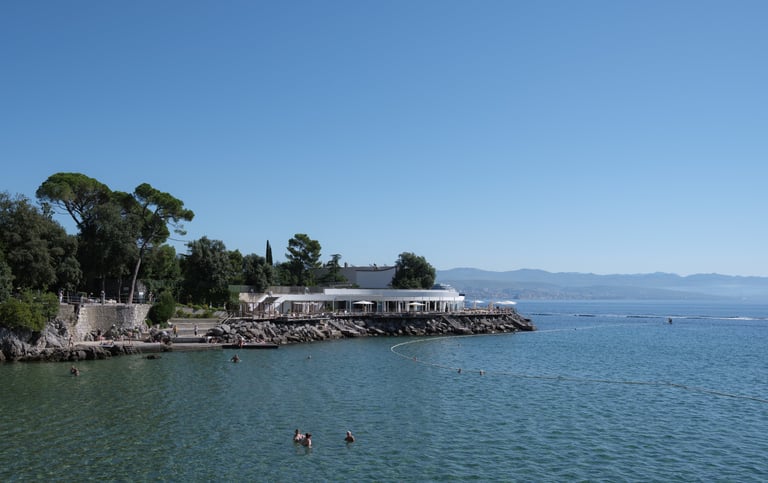
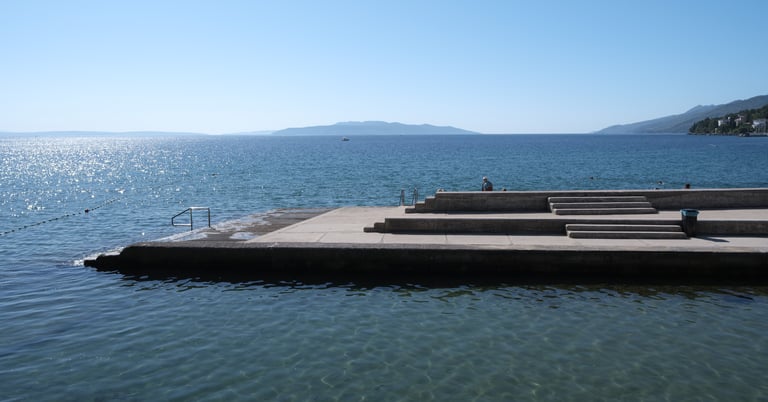
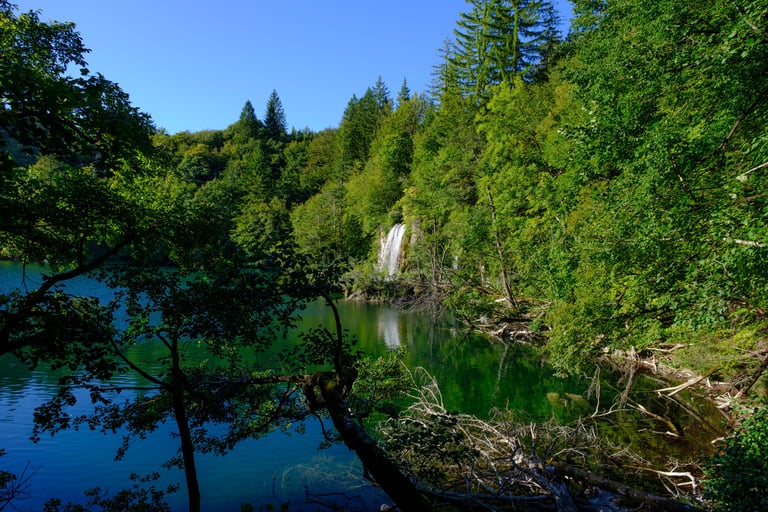
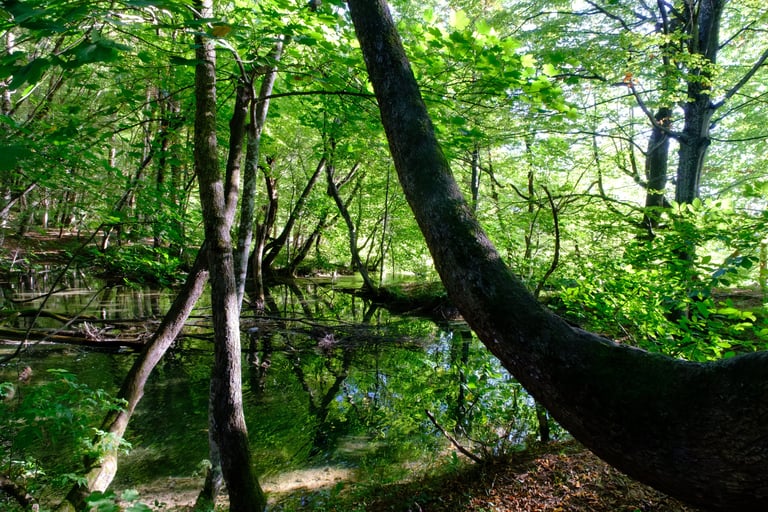
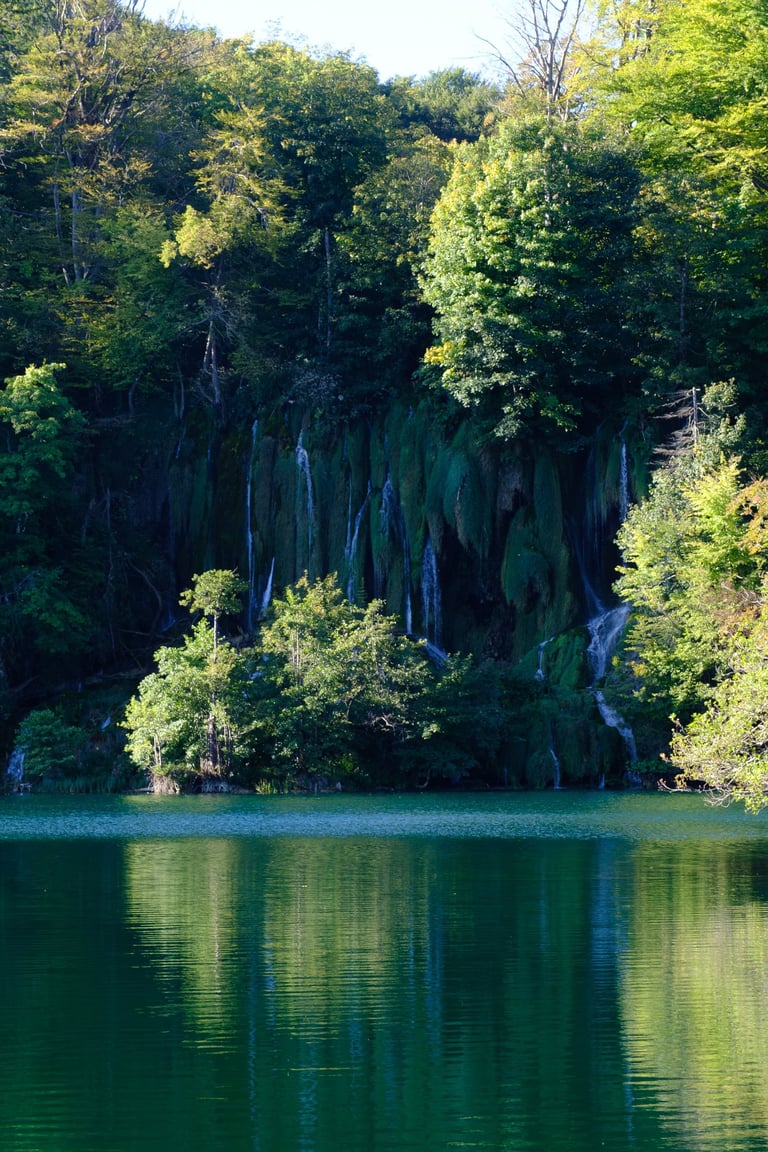
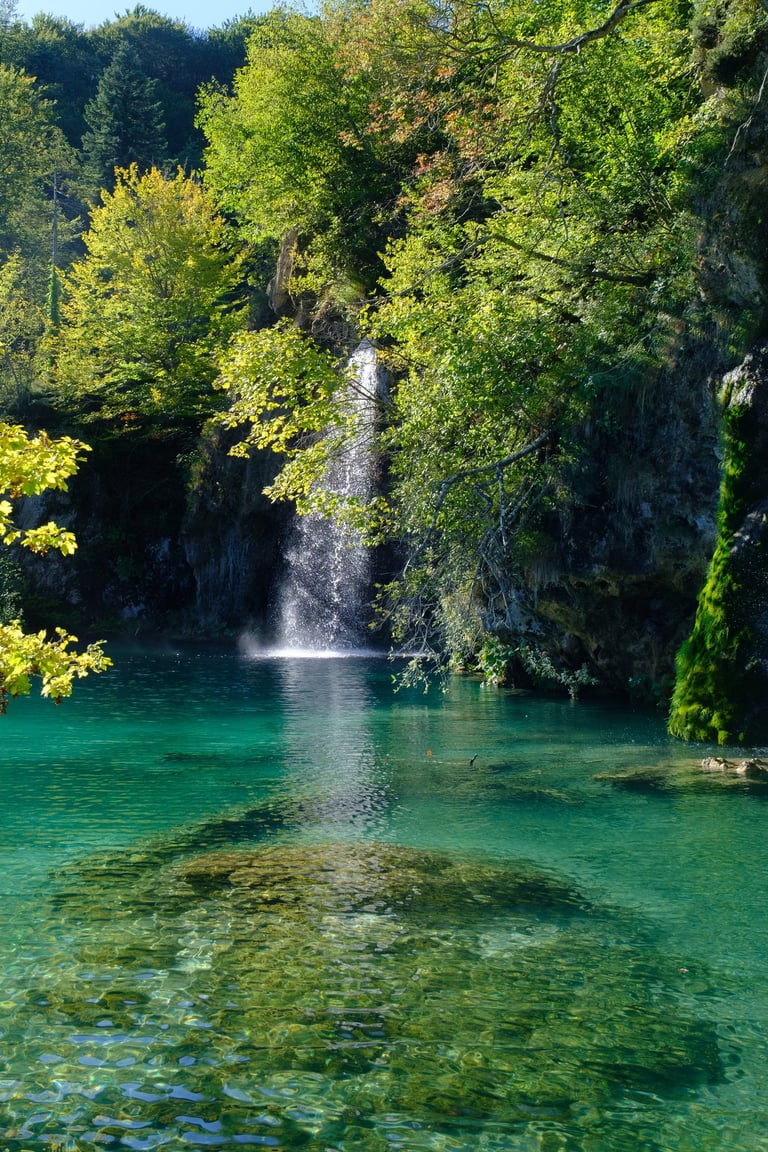
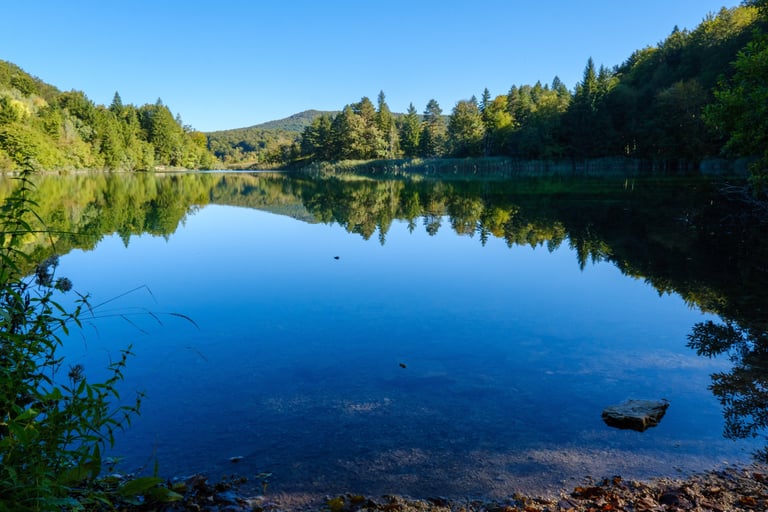
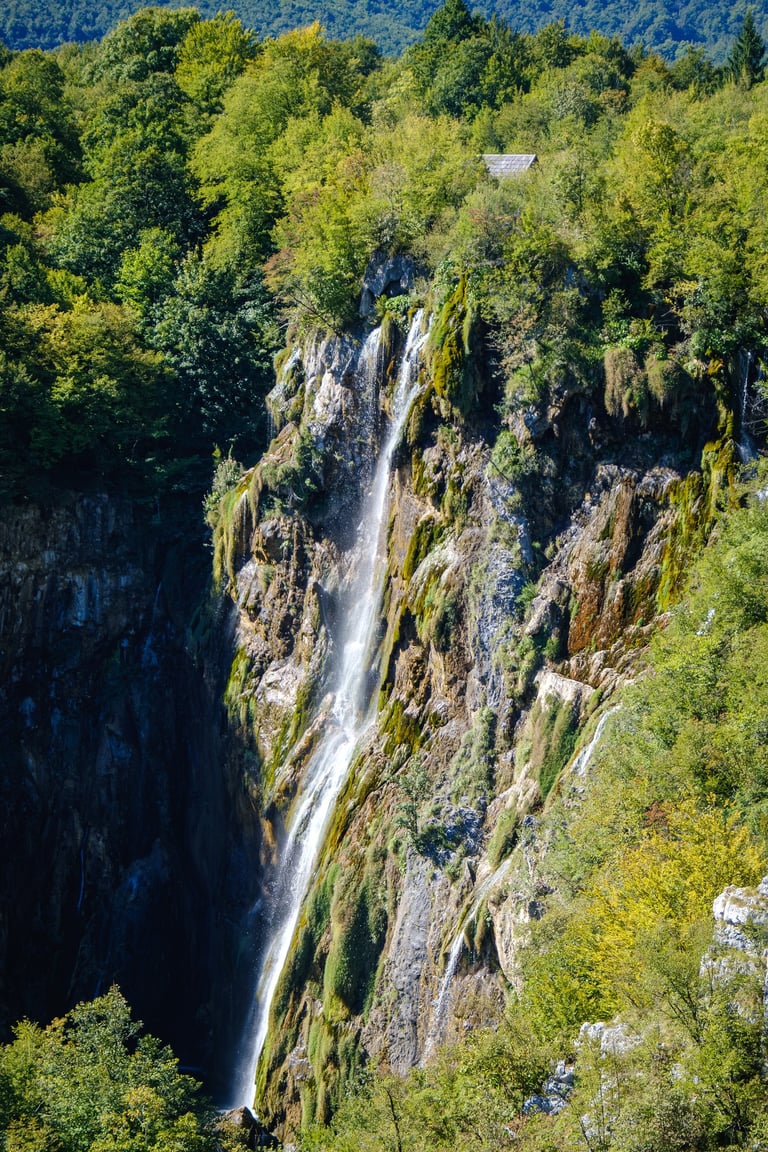
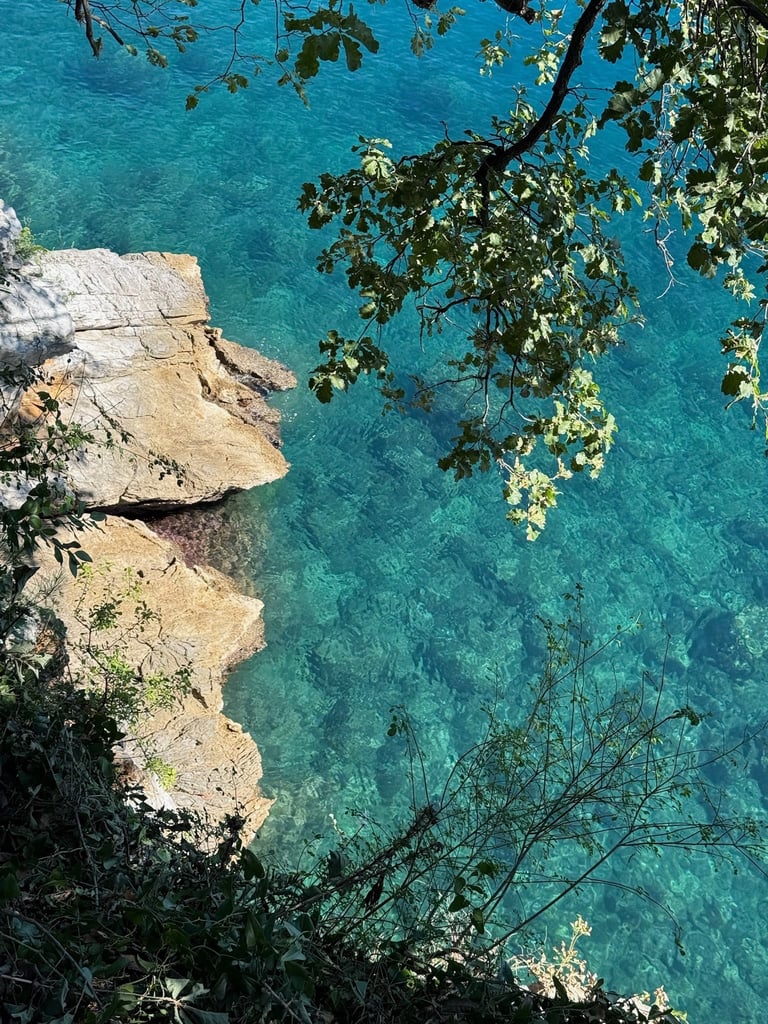
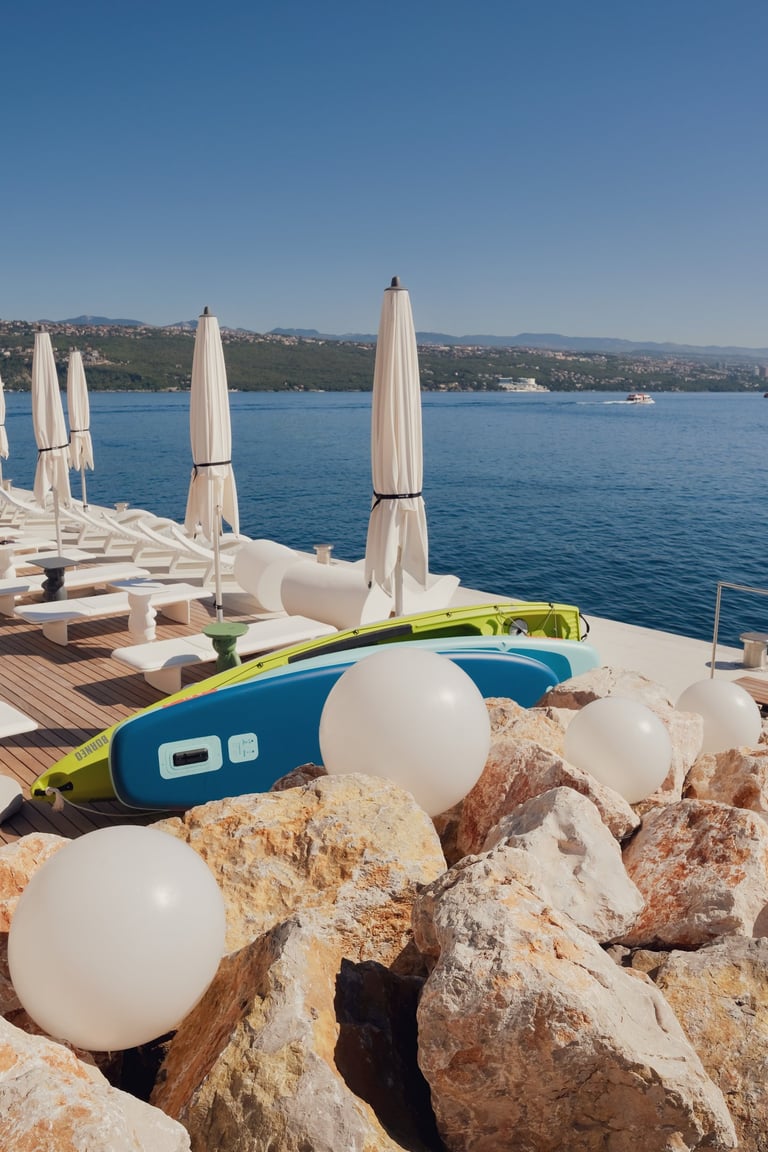
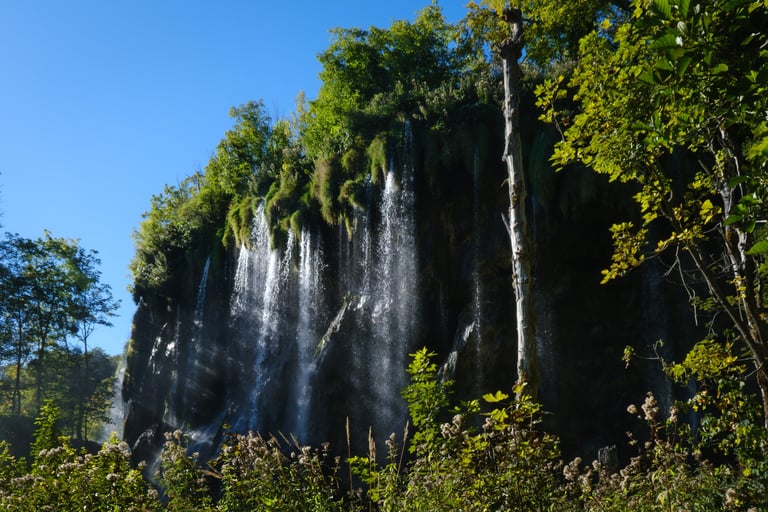
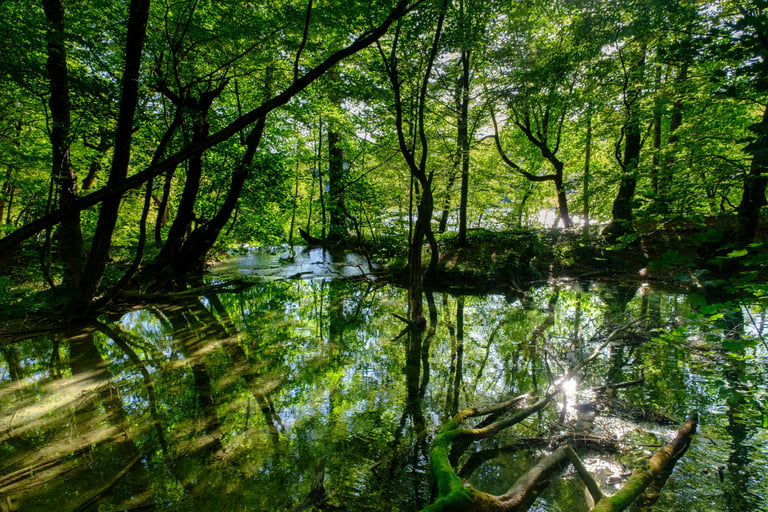
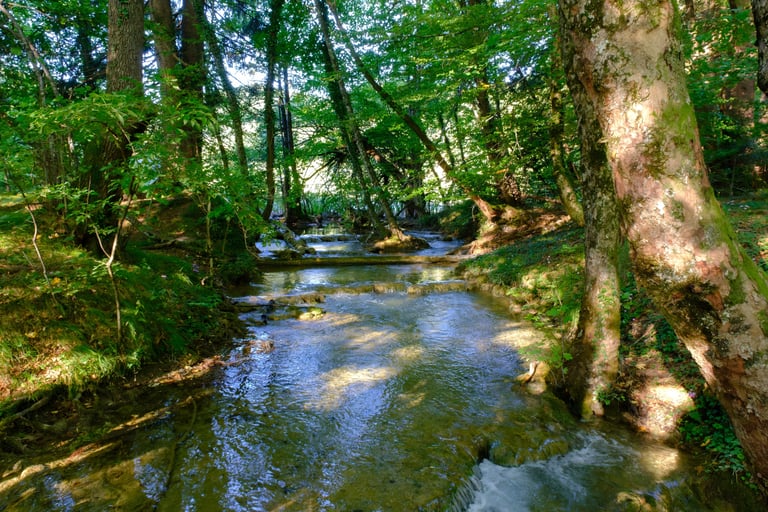
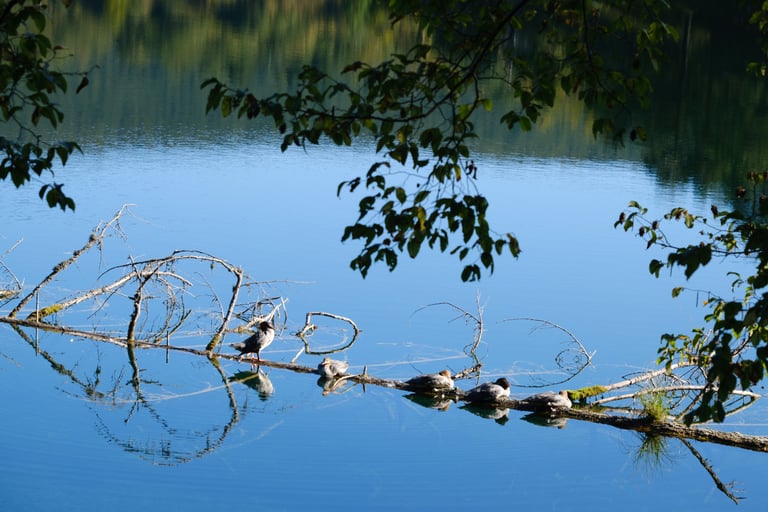
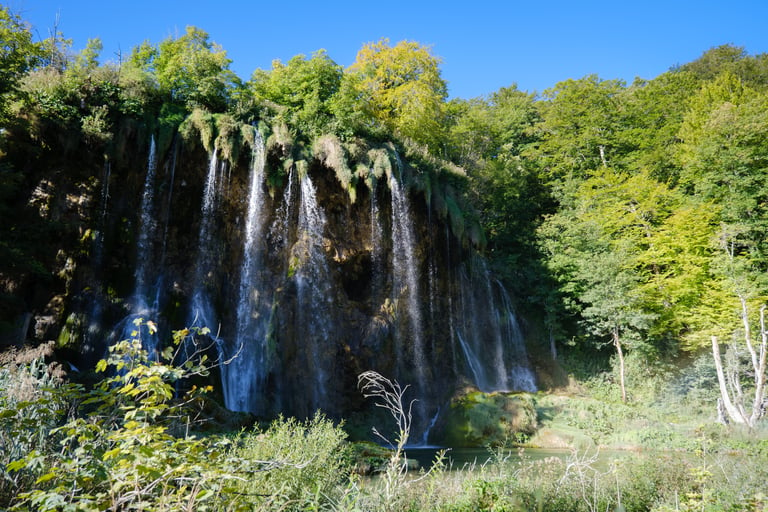
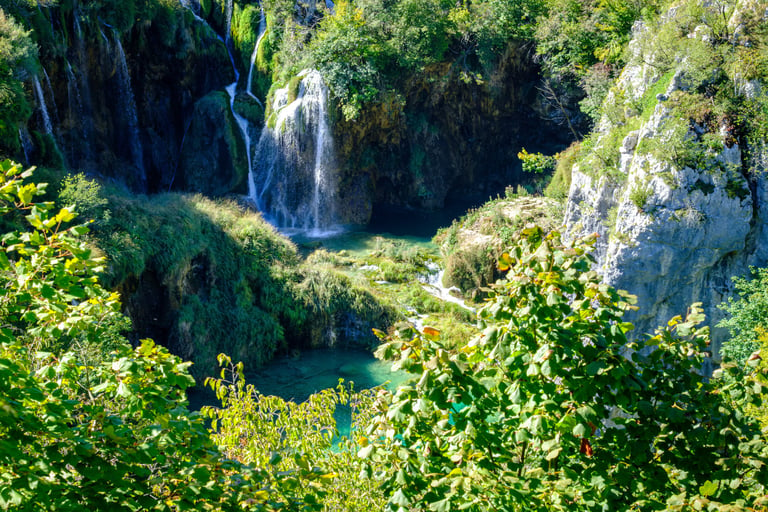

















Opatija is considered the Croatian Riviera - visually and in terms of tourism. Every place we visited felt distinct and unique but they're all so close geographically. Much like Portland, you can ski in the morning and surf in the afternoon.
The upper lakes of Plitvice national park were beautiful. The limestone in the water coats everything in a strange pale fuzz. The ground is littered with interesting sink holes from subsurface limestone erosion.
Opatija and Plitvice

Split
Split is definitely grittier than Dubrovnik - but in a good way and we really liked it. Diocletian’s palace is wild - a walled city within the city. Within the walls are several decumanus - roman roads built ten soldiers wide. We took a nice walk to Marian Park and Sustipan park where we relaxed under the trees by the ocean. It gets much less touristy just a few blocks out of old town/off the Riva. Split is crazy for their football team, Hajduk Split (HNK).
We chatted on the square one night with Nano, a 73 year old pensioner seaman still living in his family home in the old city. We inadvertently sat on 'his' step in the square. Like many, he thought Yugoslavia was a great country. He knew quite a bit about the US, claiming to have traveled it extensively - even fishing with John Fogerty in Louisiana and chartering for Giorgio Armani in the Caribbean.
Meals: We had a fantastic dinner at Konoba Ma:Toni (best of the trip, perhaps) - steak salad, angus ćevapi (also called ćevapčići - basically meatballs). Potatoes, cashew cream pasta for Kir with raw almond cake for dessert served with limoncello. Veg was a good lunch spot. Tofu sushirito, tofu bowl with edamame, rice, greens and pickled vegetables.
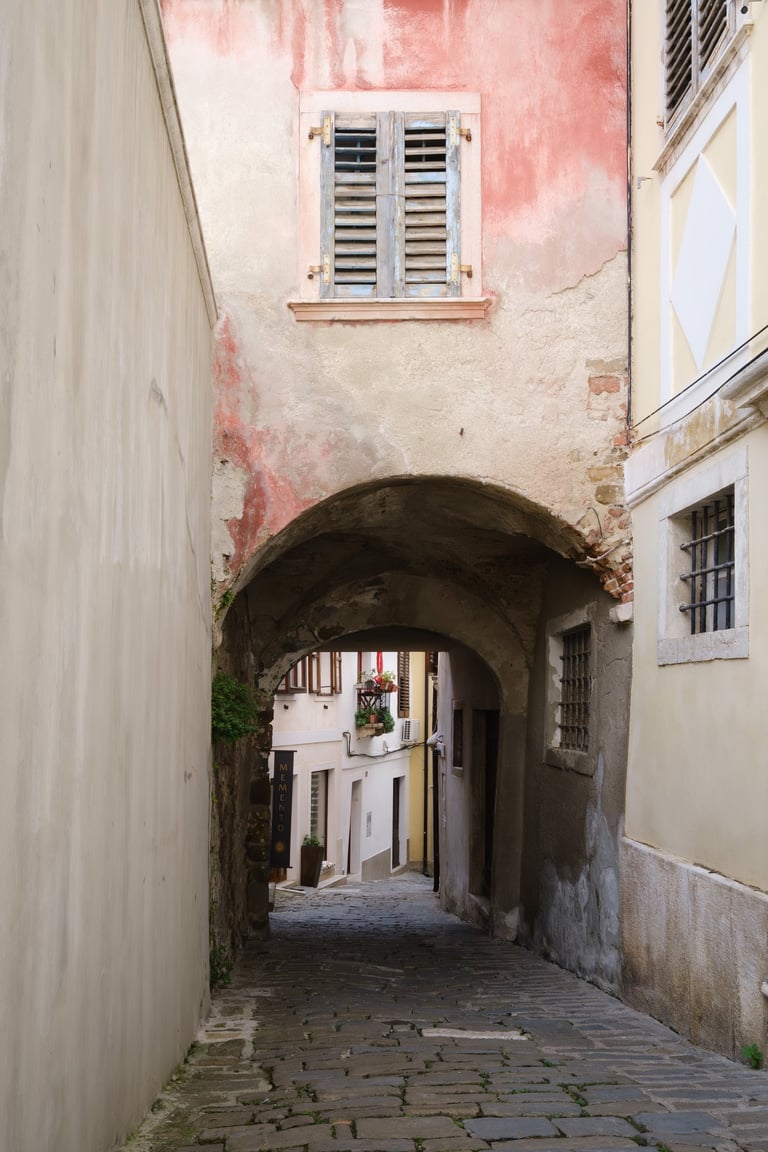
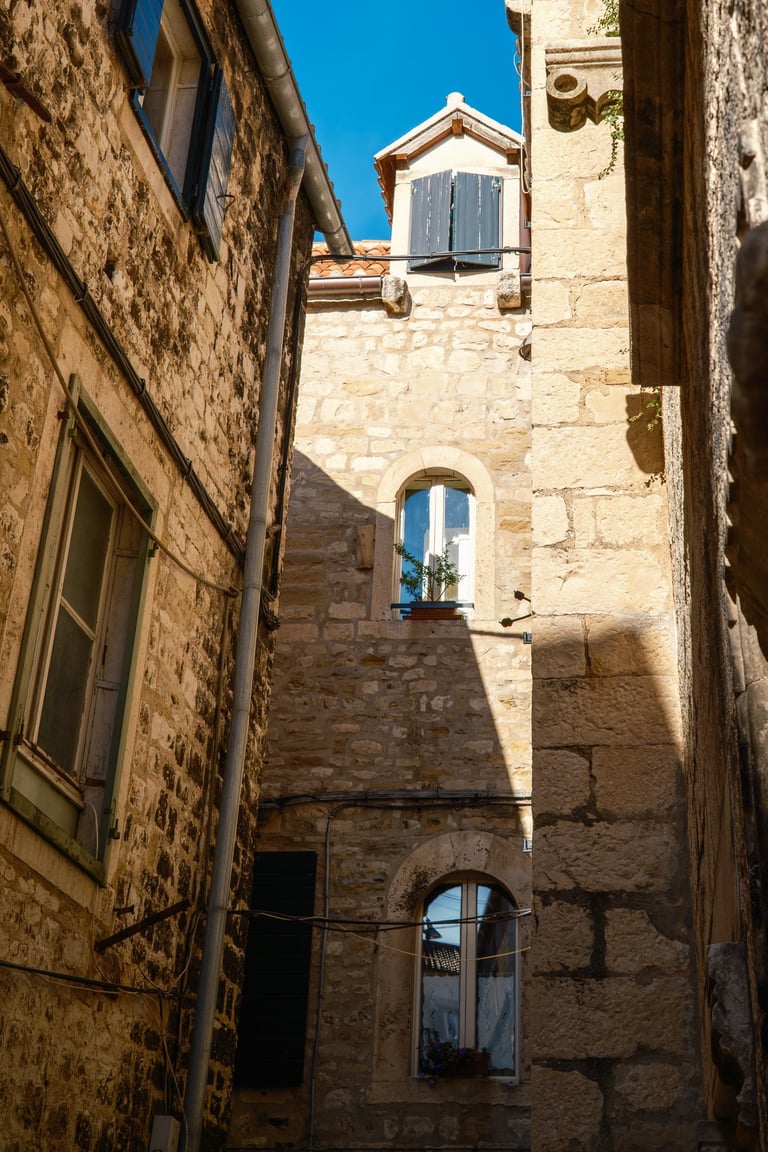
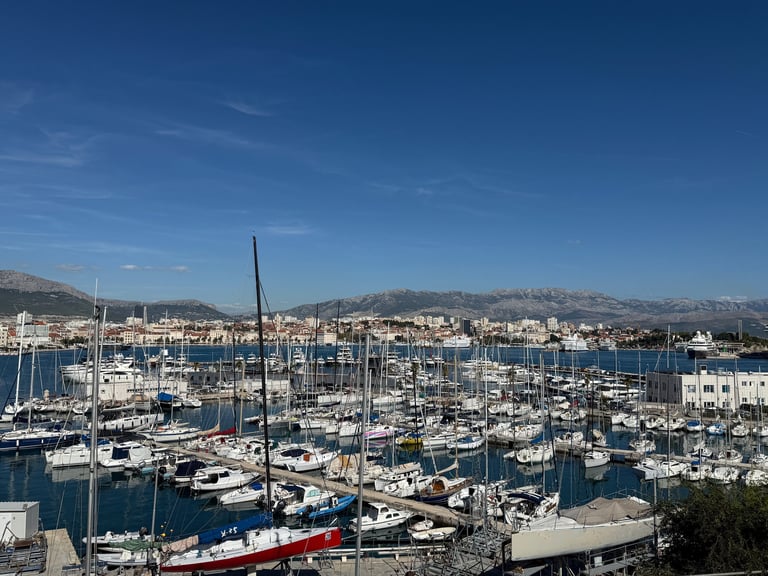
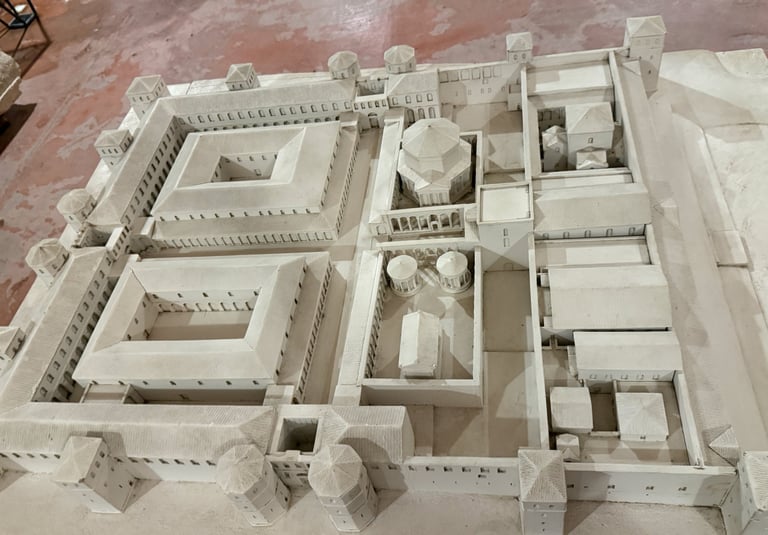
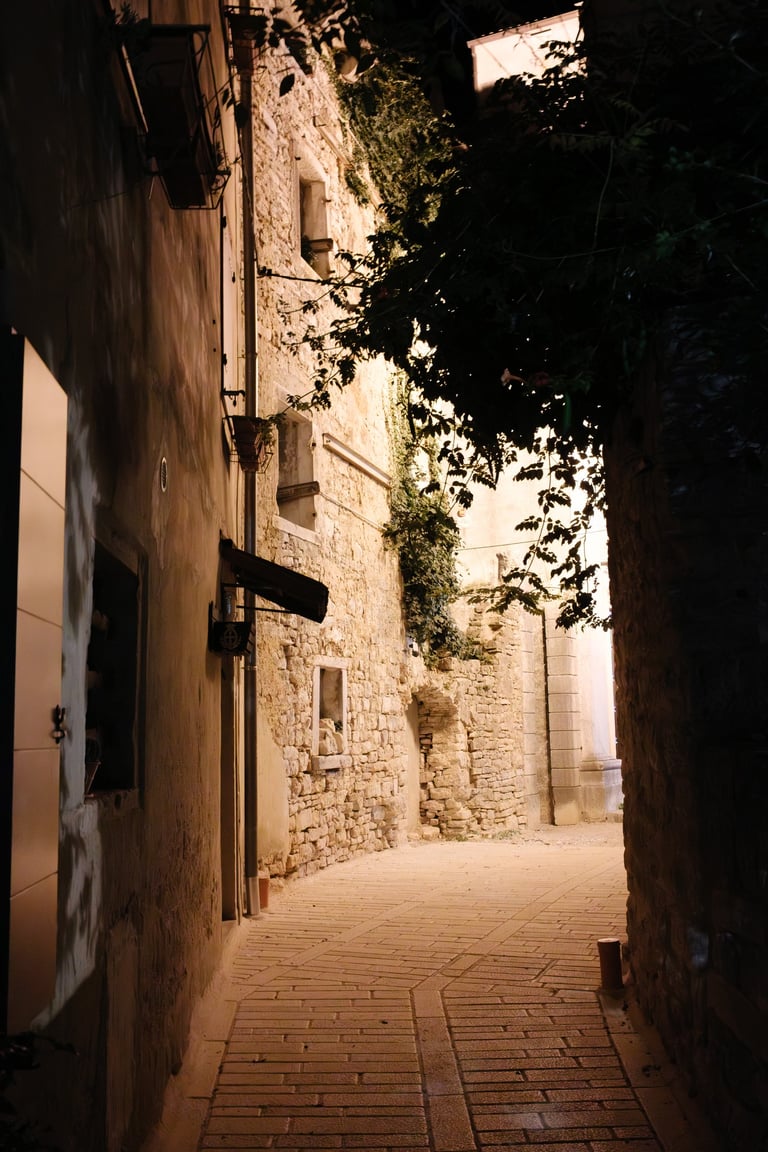
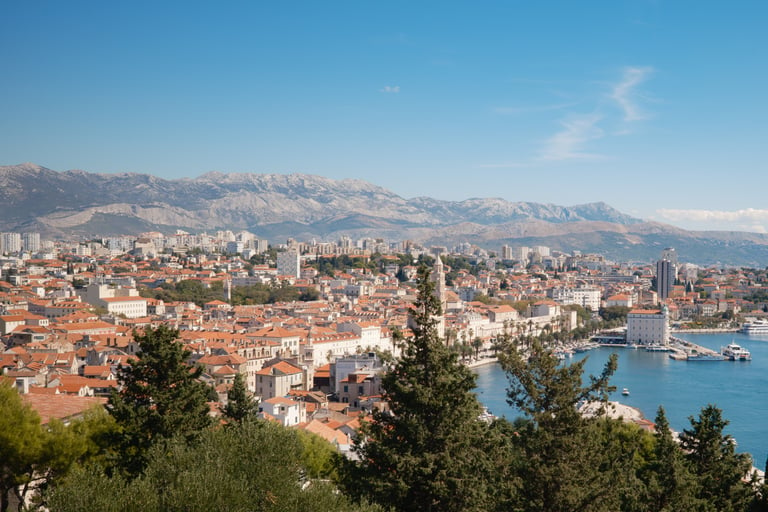
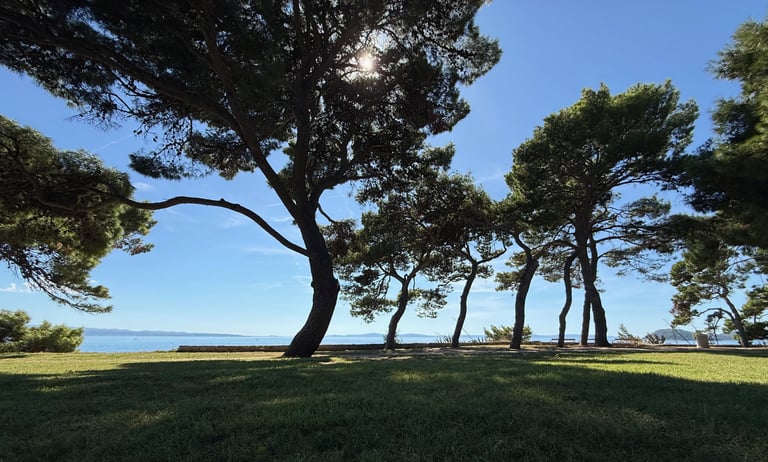
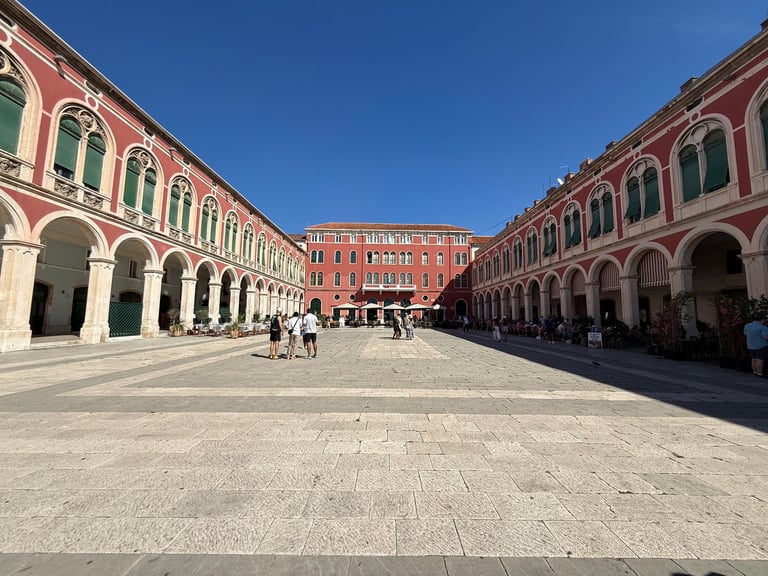








Bosnia-Herzegovenia
Stolac and Mostar
Our local guide, Edin, fled Stolac at age eight to escape the war. The child of physicians, he cared for his younger sister while they left for months on end to treat war wounded. He returned in 1998 and has spent 20+ years rebuilding the town. A professor of literature, he was fired for entering the (still) religiously segregated school through the 'wrong' entrance. (I'm sure he knew exactly what threshold he was crossing.) He’s now a full time guide, mostly for Rick. In his view, 'Animal Farm' is the perfect view of Yugoslavian communism and its downfall as by the end, no one knew who was the pig and who was the farmer.
Why is he so passionate about Stolac? Besides being his home, it’s Bosnia Herzegovina in miniature. "If it can be fixed so can the country". I loved how Edin described the town: "Home is where they will notice you missing."
Mostar is a sensory experience - visually rich, the sound of the call to prayer throughout the city, the textures of the local crafts, the taste of Bosnian coffee, and the smell of ever-present cigarettes.
Meals: We were served a wonderful buffet at the Old Mill in Stolac and had a fantastic group dinner in Mostar at Restaurant Šadrvan with more ćevapi for me, and stewed vegetables for Kir (her best of the trip).
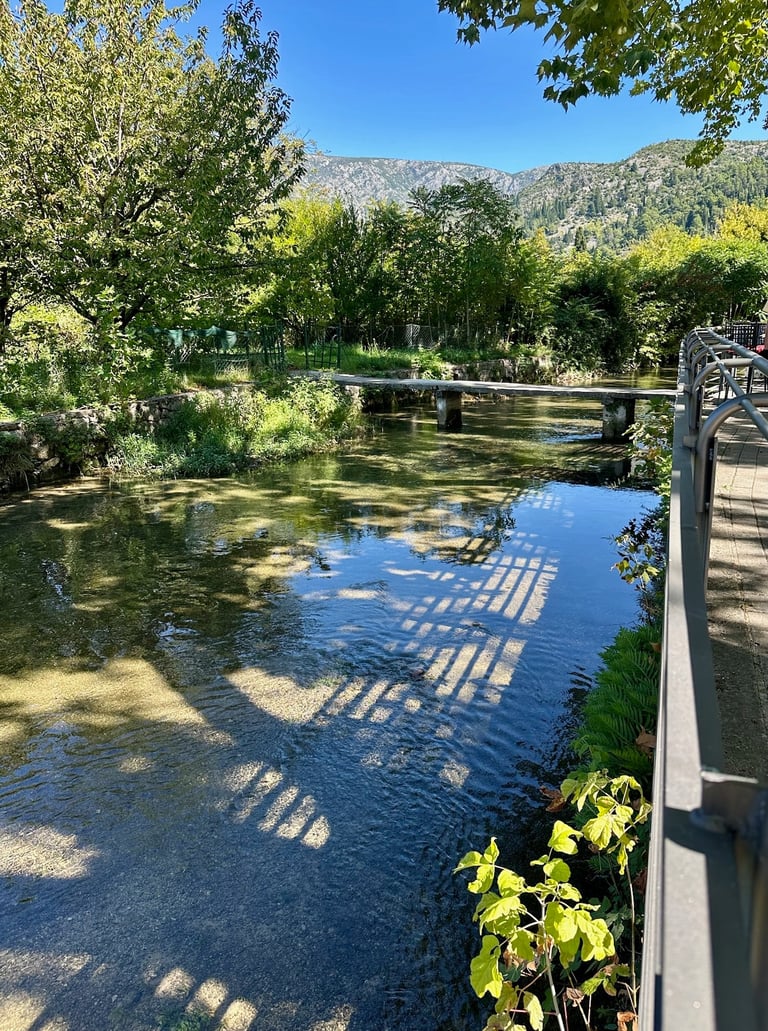
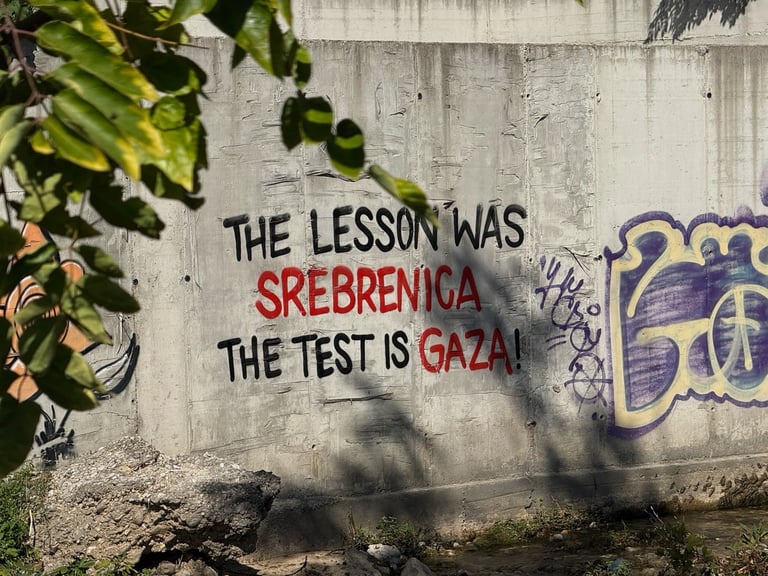
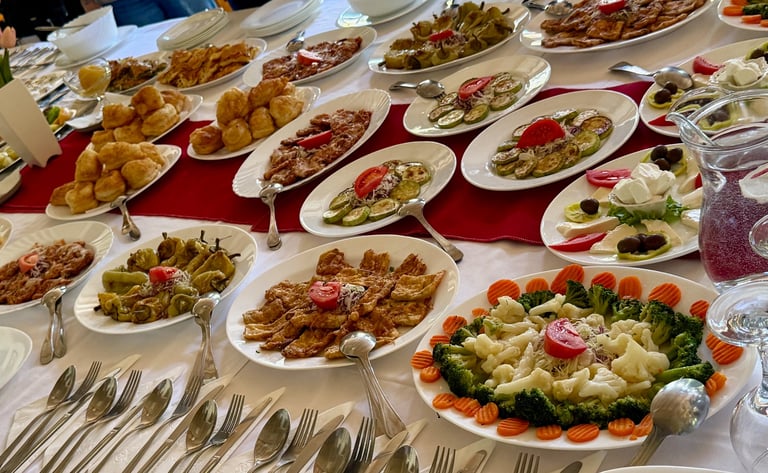
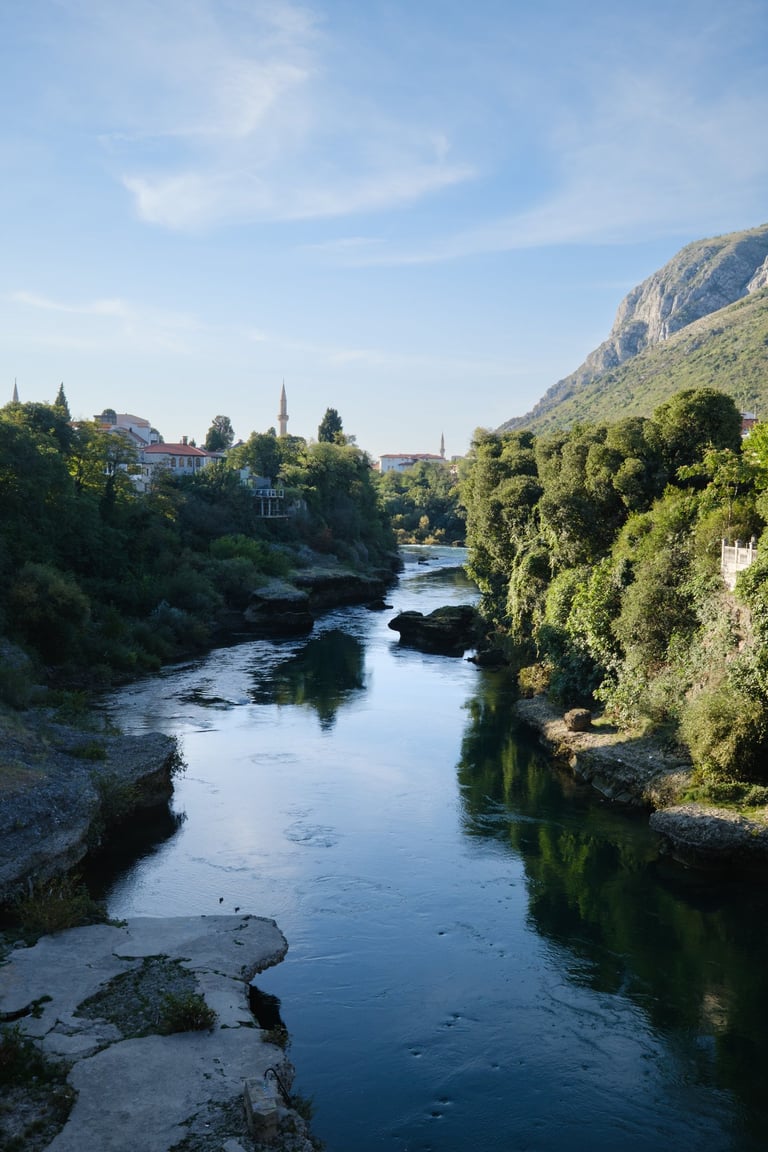
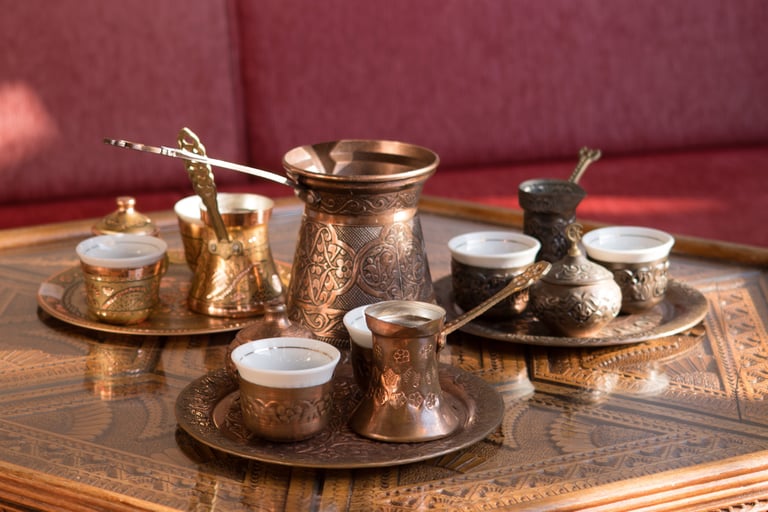
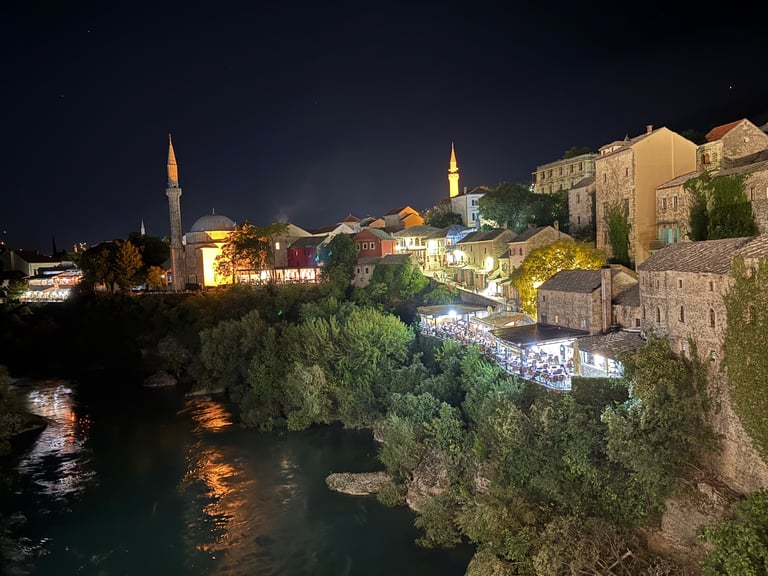
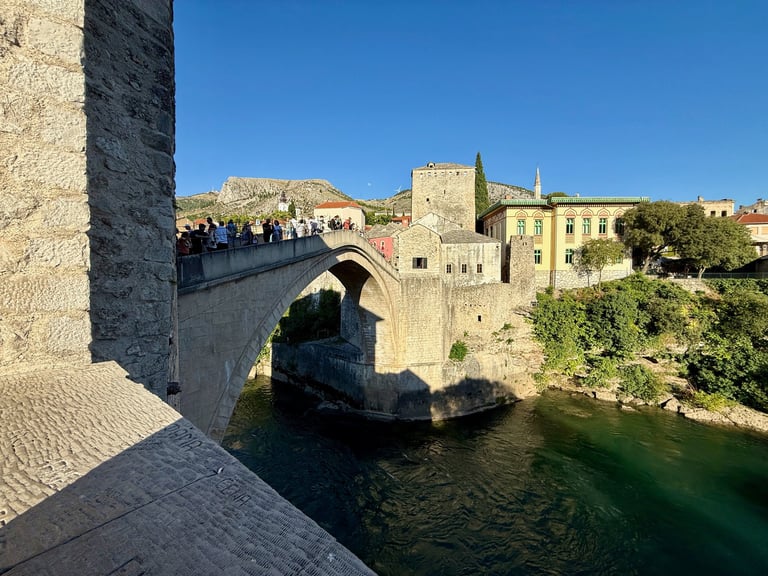
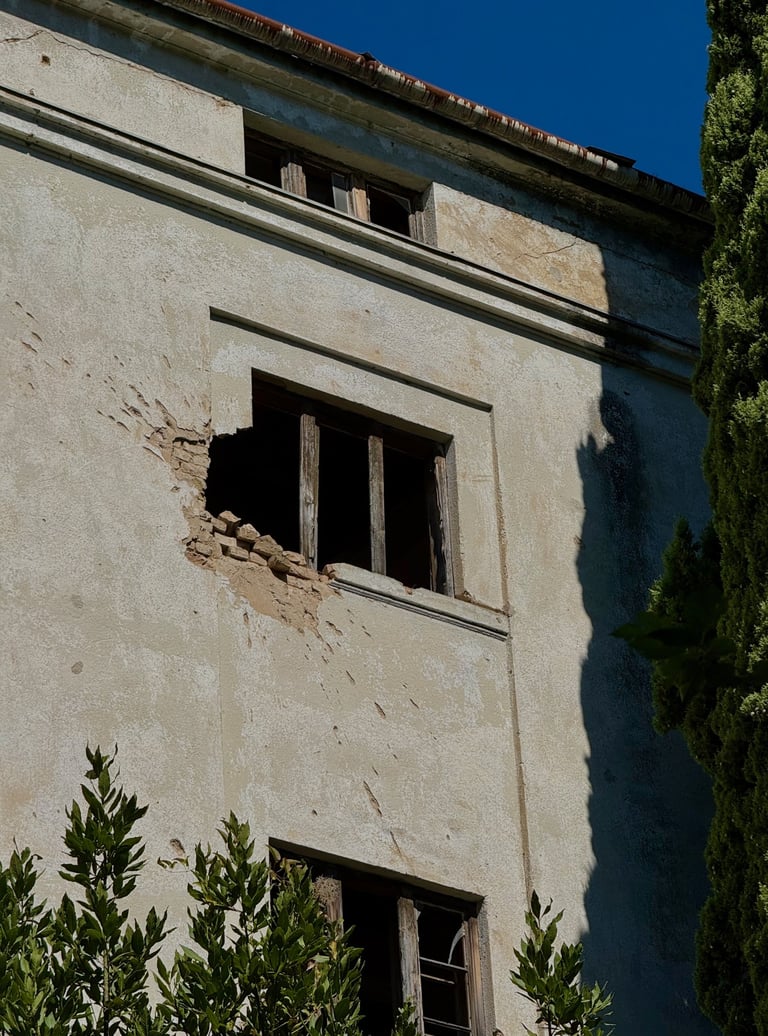
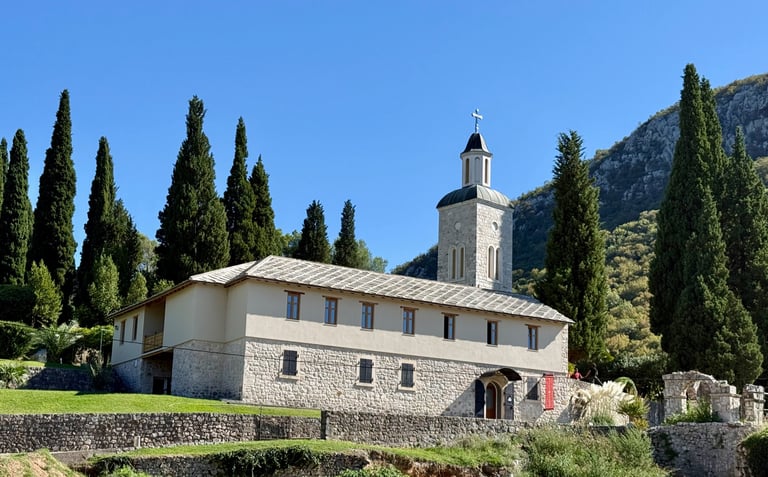
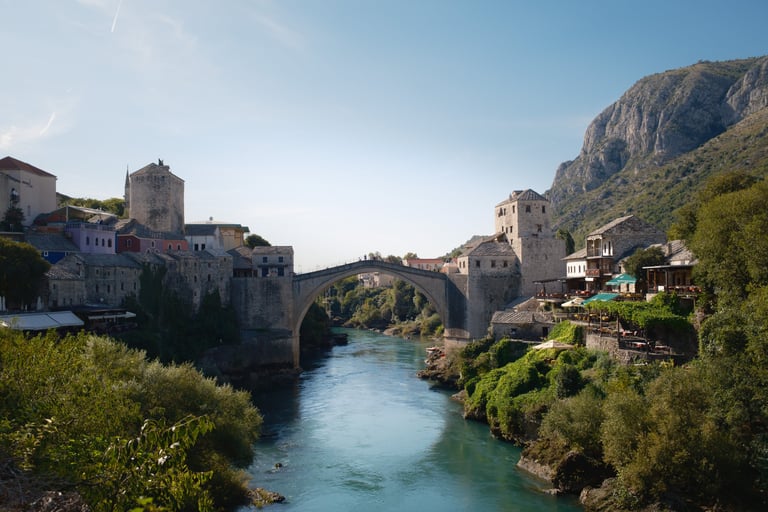
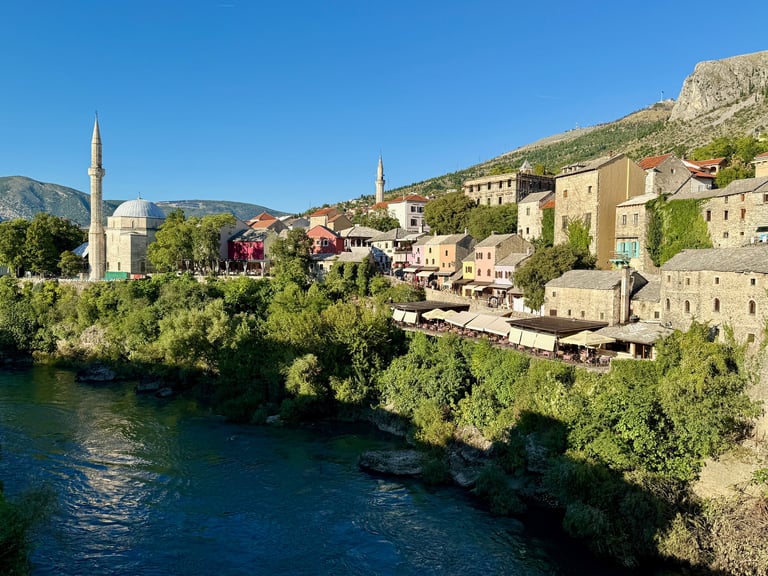
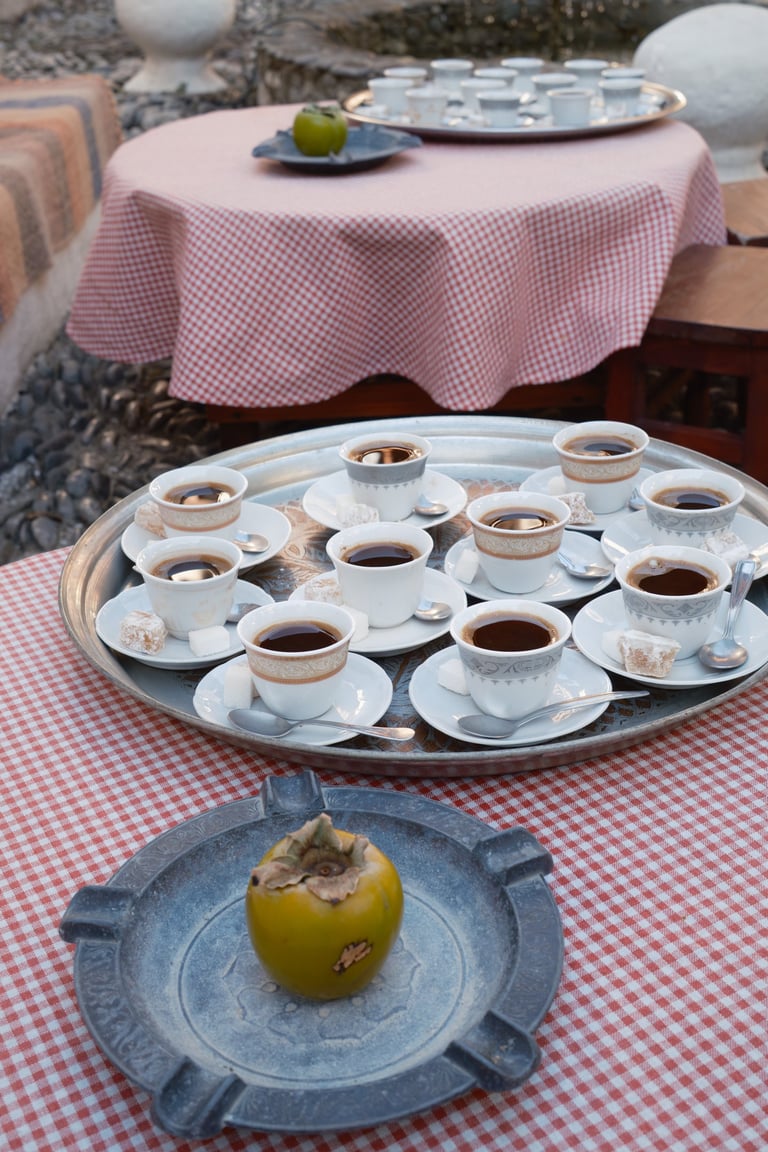
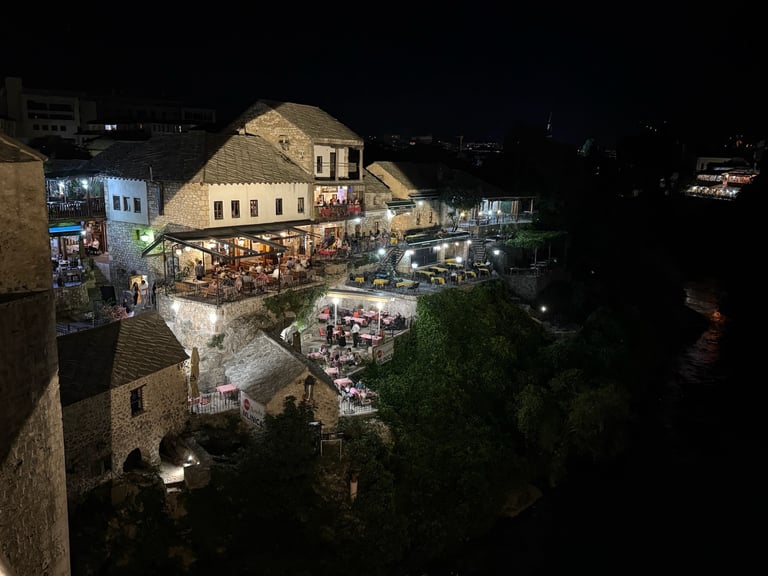
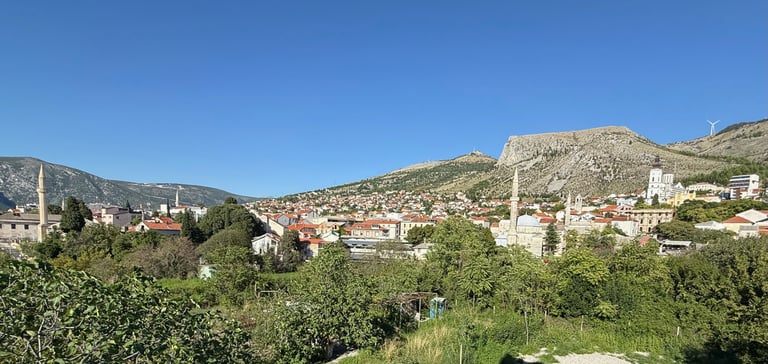














The Cemeteries of Mostar
During the war, the hills around Mostar served as firing positions for Serbian artillery and snipers. Snipers exacted a tragic toll on the city. According to muslim beliefs, the dead should be buried within 48hrs of passing. Given the siege on the city, Mostar's city parks became makeshift cemeteries. Walking through these cemeteries today one is struck by the headstones: almost all men, all deceased between 1993 and 95, and mostly under the age of 35.
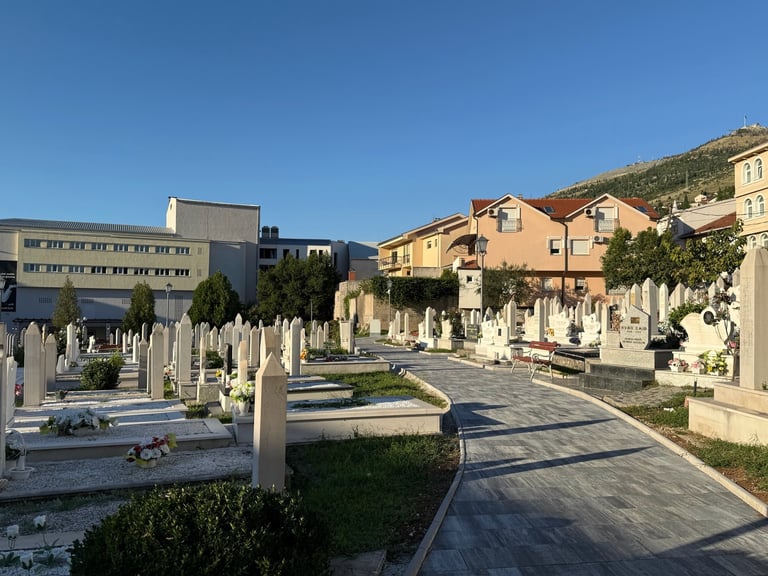
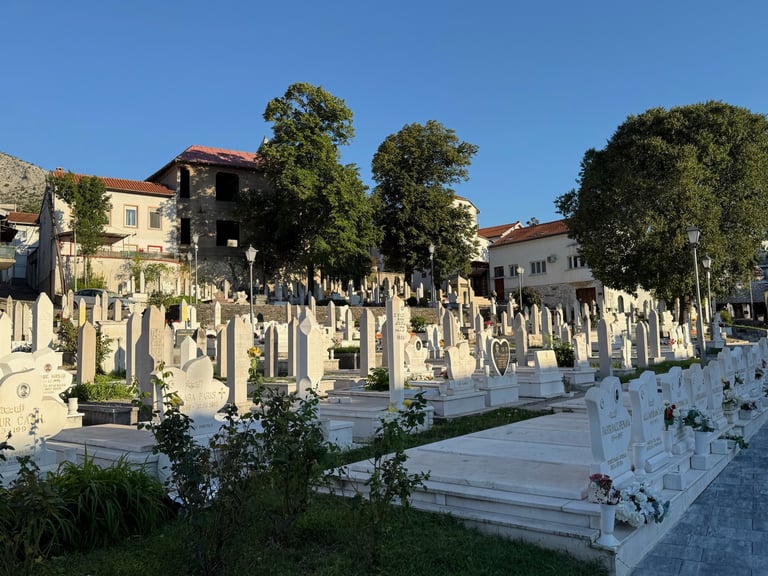


Korčula
The quintissential Adriatic island, Korčula is entertaining yet relaxing, buzzing yet calming. But we didn't meet many (any?) locals. Seems like a very migratory place.
Meals: We had a nice dinner at Silk Izakaya during a torrential downpour and very active lightning storm. Konoba Aterina was also very good. Beautiful patio and tasty homemade pasta. I think we had lost count of the Hugos and Aperol Spritzes at this point in the trip. Didn't have a bad beer in the region either.
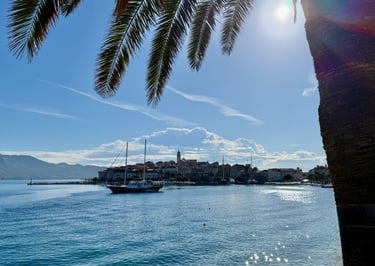
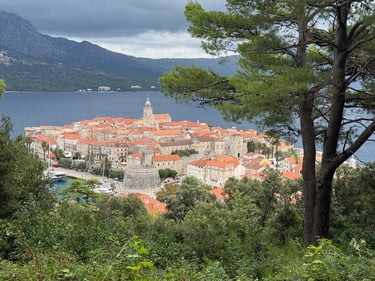
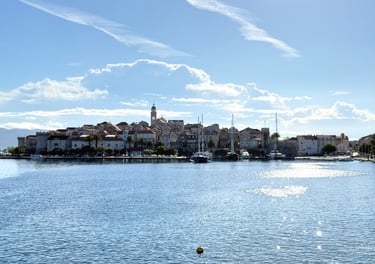
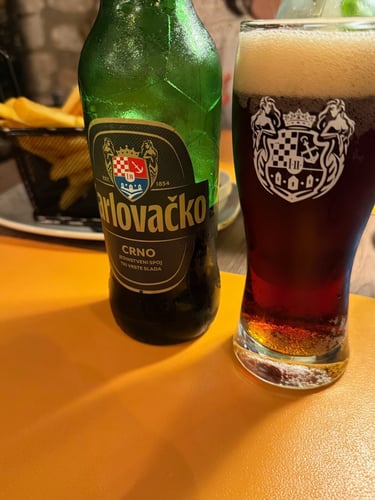
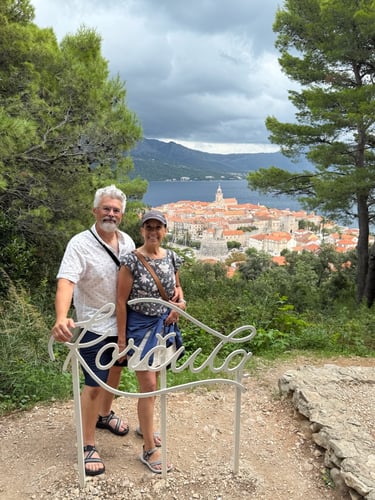





The Pelješac peninsula
A brief stop on our way to Dubrovnik. We visited the Antunovic donkey farm and agritoursimo. One of us sampled donkey milk (slightly watery, a little like soy or almond, actually). We had an amazing, raucous lunch with the group served up in a traditional Peka method - in a cast iron cooker heated in the hearth for hours - meat, potatoes, jug wine, and chick pea soup for Kir. This was our first taste of carob liqueur - which we brought home.
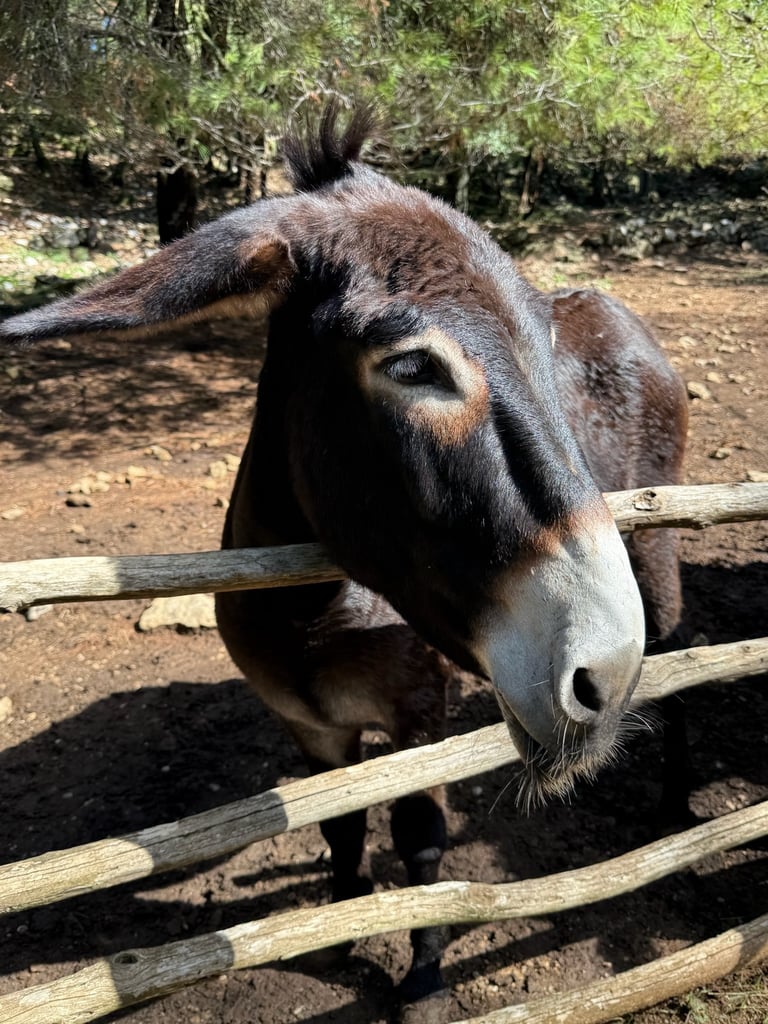
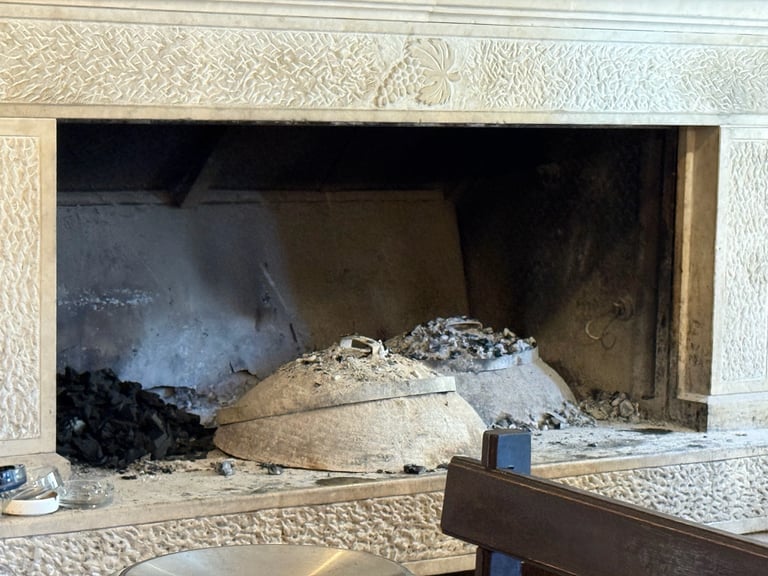
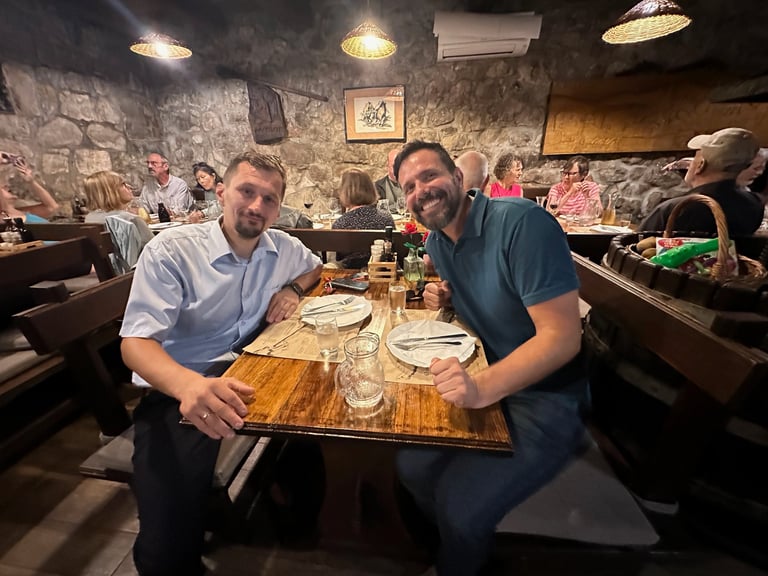
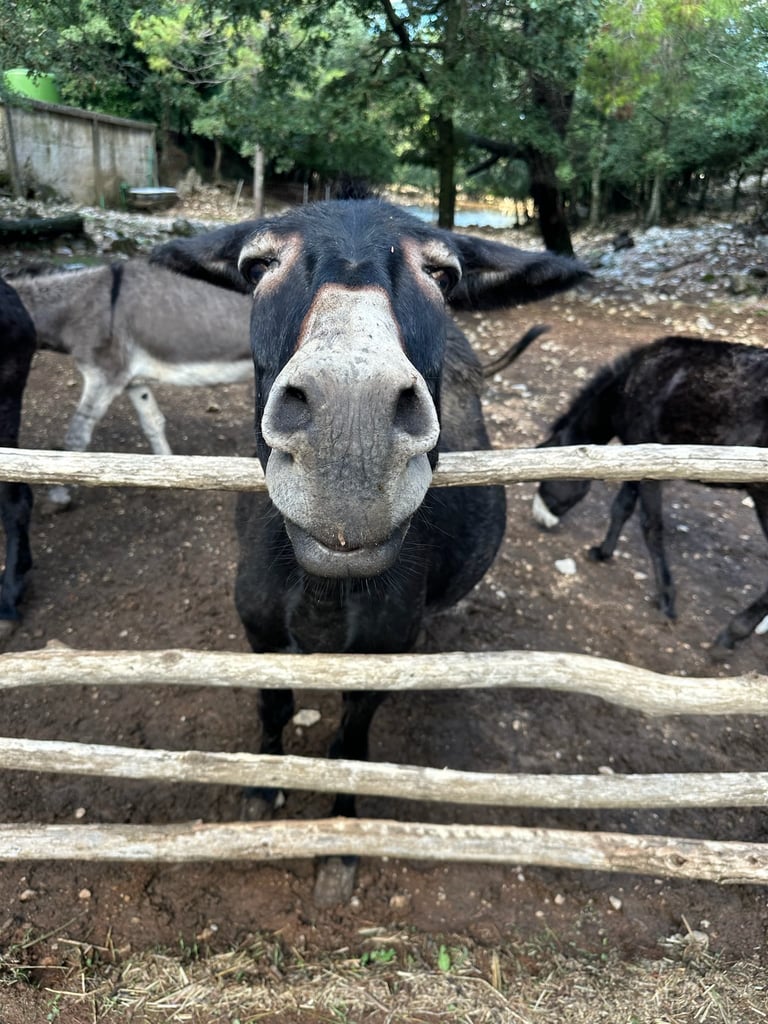
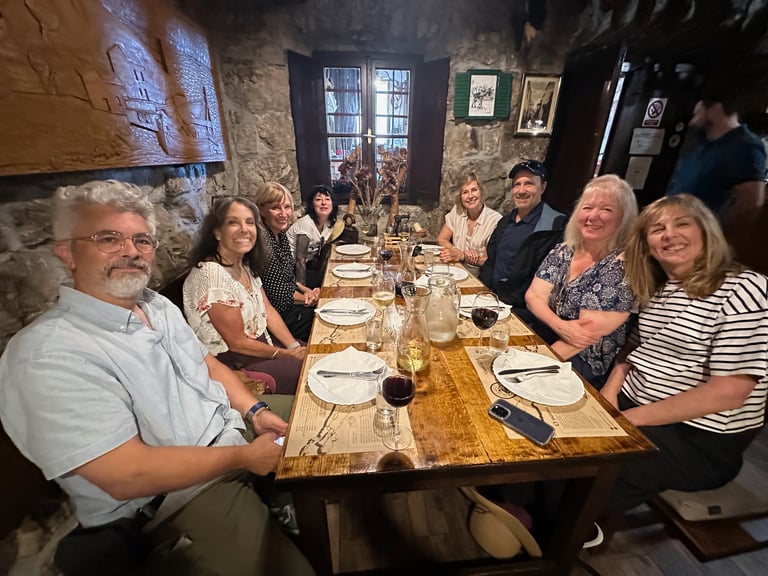





Dubrovnic
The final stop on our tour. The walled city is quite remarkable but it is clear that the city is investing in it's main attraction - rebuilding, cleaning, and curating the old town to such a degree it felt a little less historic than many of the other stops on our tour. Morning crowds are bearable but we quickly decided we had to get out of the old city in the afternoons, spending one afternoon at local beaches and cave bars and a second on the lovely island of Lokrum. Fast fact: We learned on our travels that Cypress trees were historically only planted by cemeteries or monasteries and old growth trees/groves give a signal to the location's history.
Meals: Dinner at Soul Kitchen in Dubrovnik was very good. Agave carrots w/hummus and cranberries, al pastor tofu tacos.Lunch with the peacocks at Lacroma on Lokrum was great. The friendliest staff and freshest ingredients. Urban and Veggie (in the Gruz harbor area and on many 'best of' lists) was very good as well. An amazing marinated seitan served over sweet potato gnocchi.
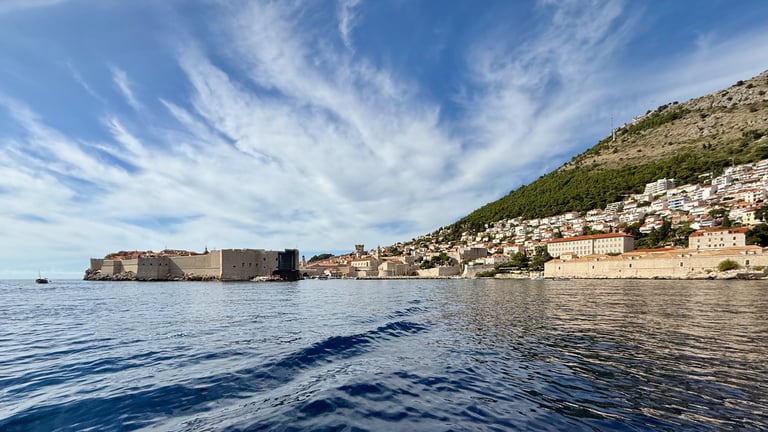
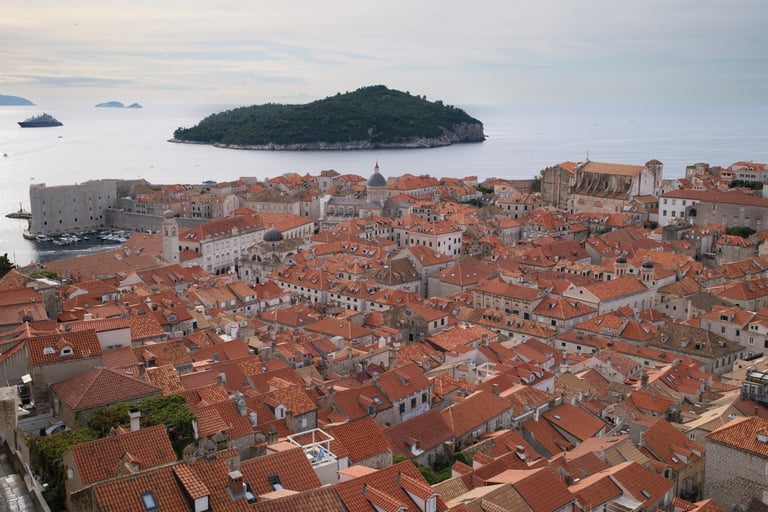
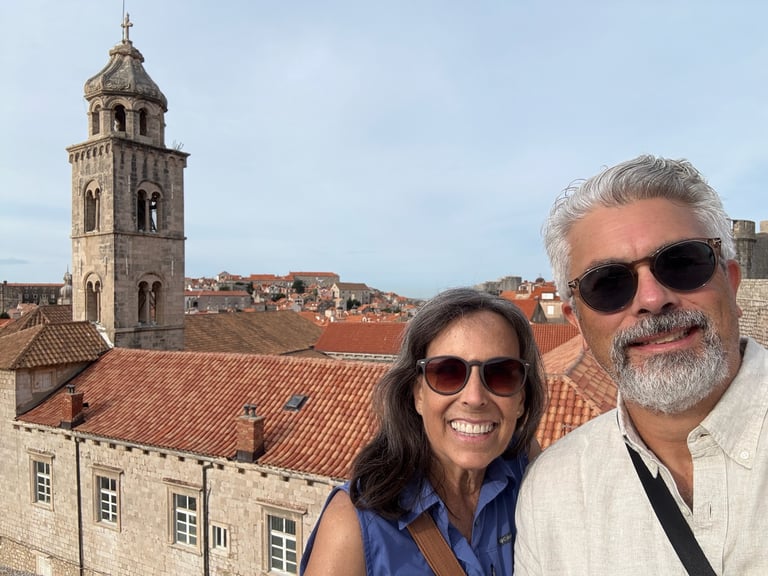
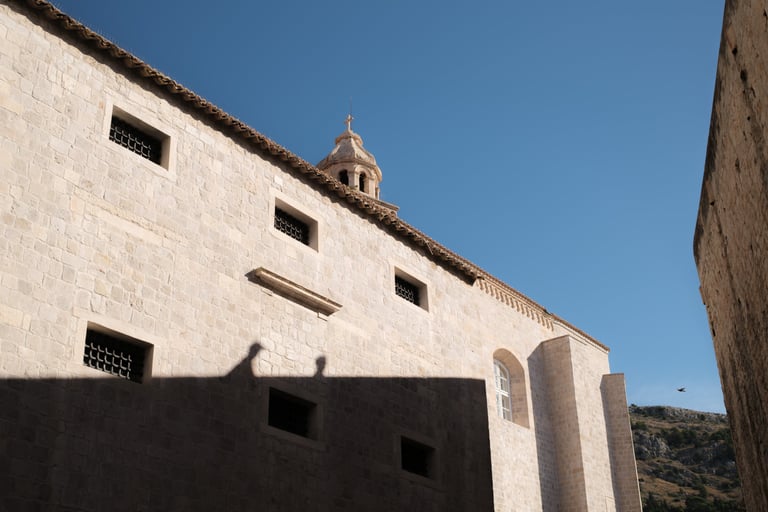
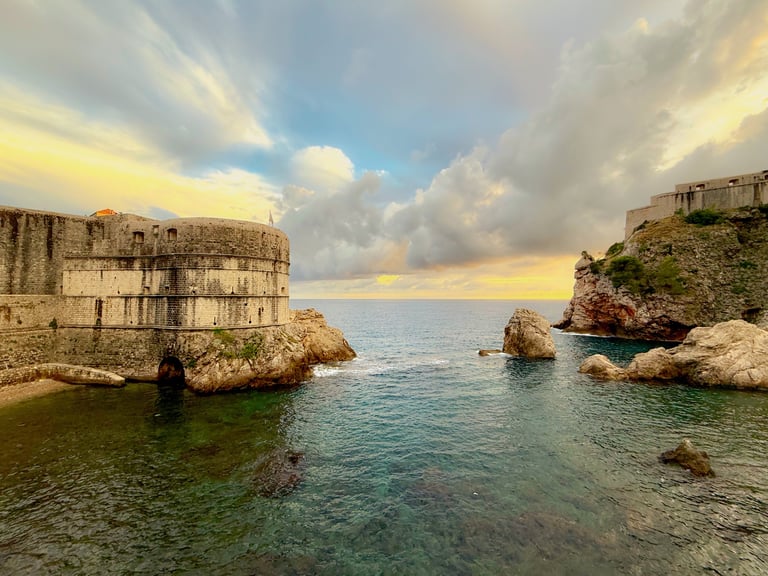
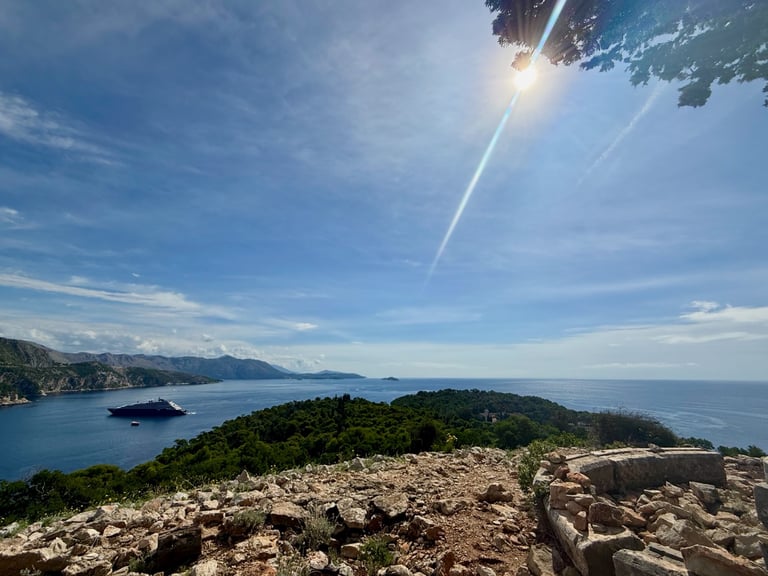
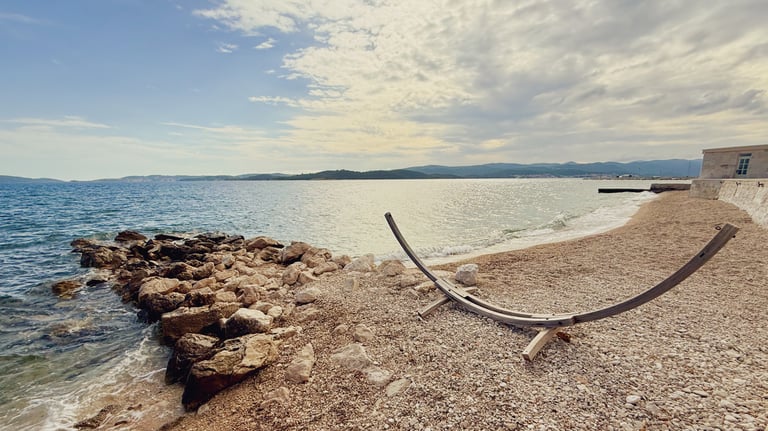
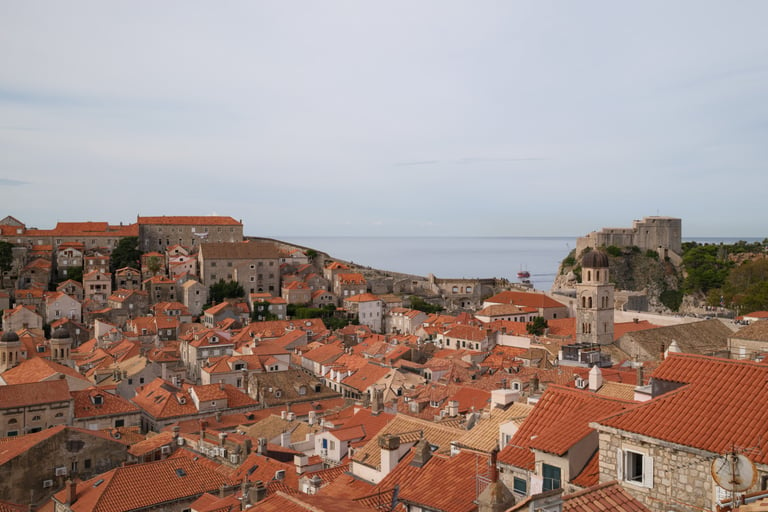
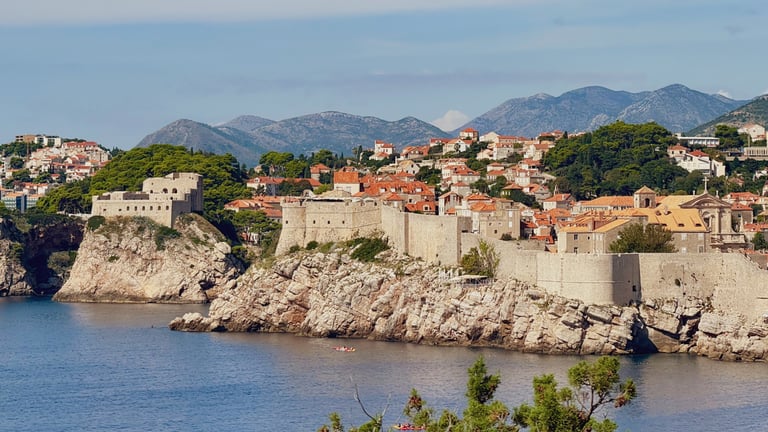
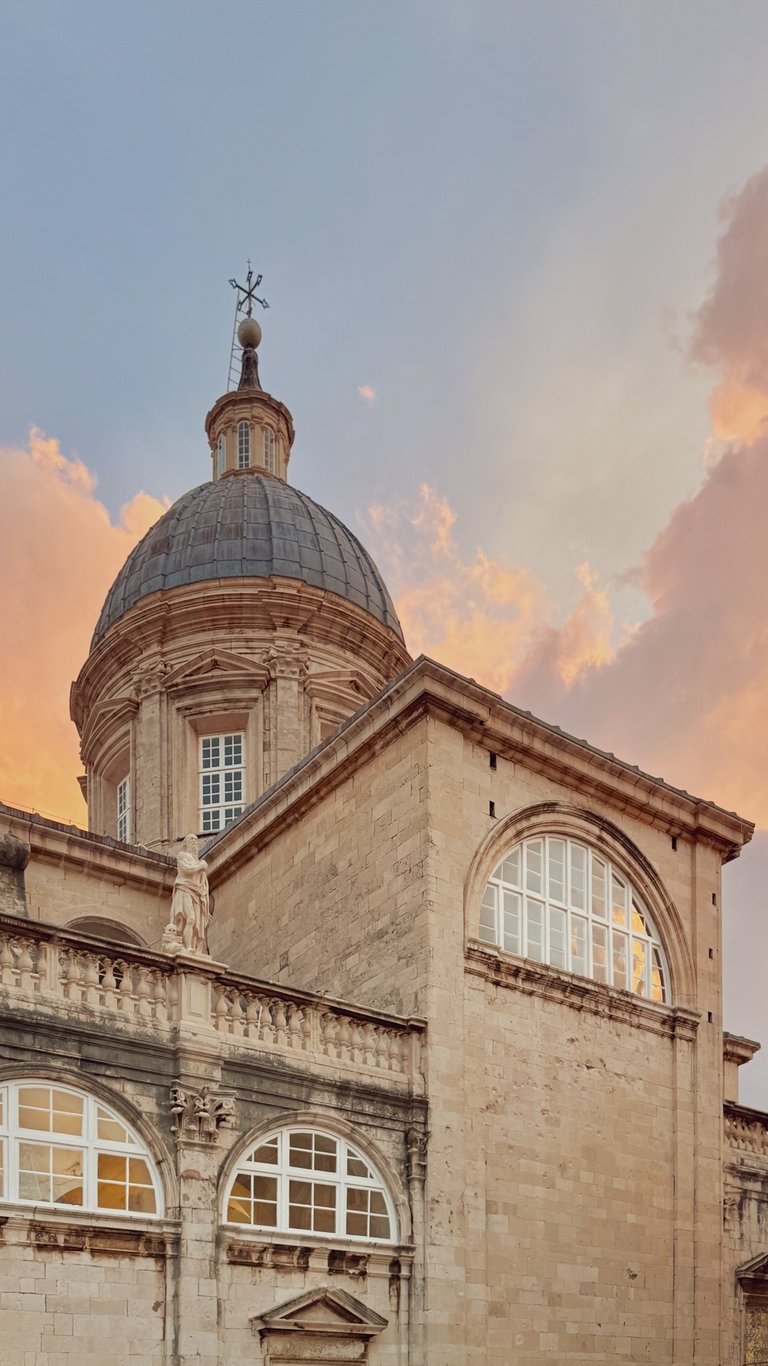
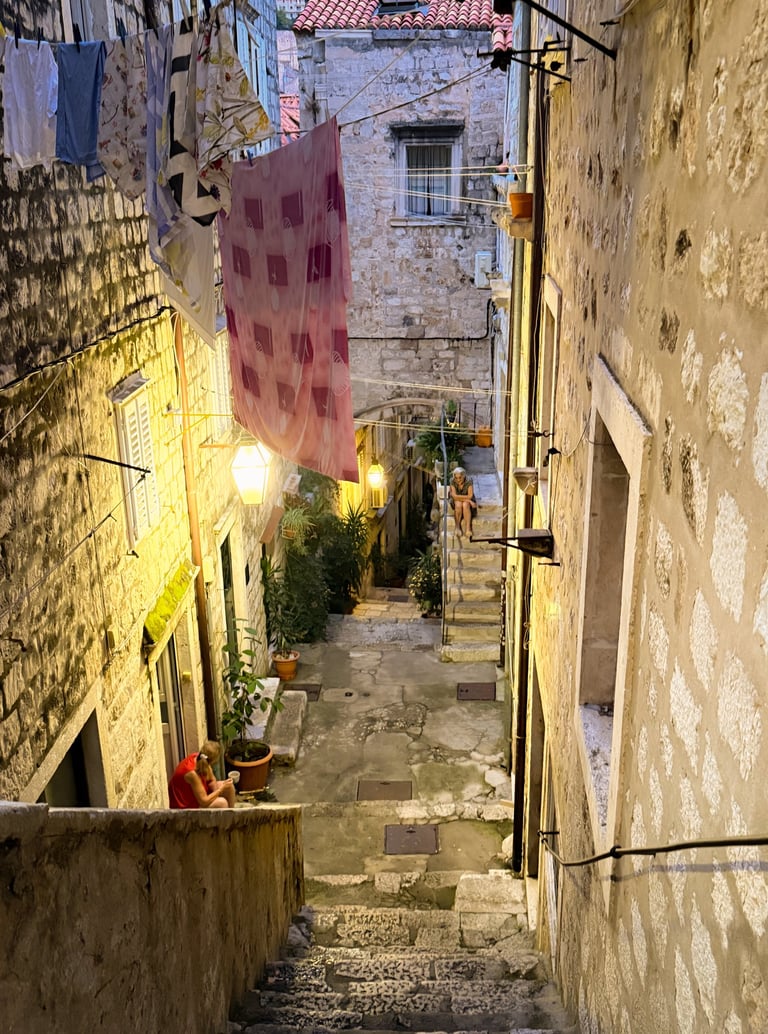
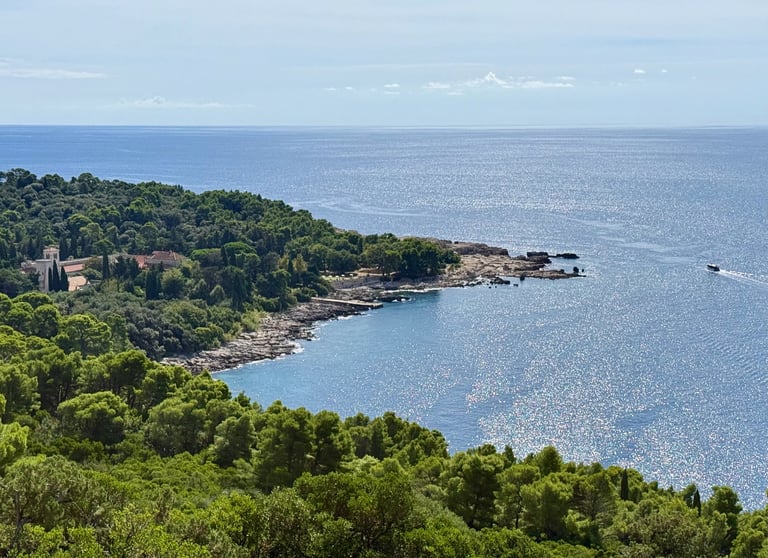
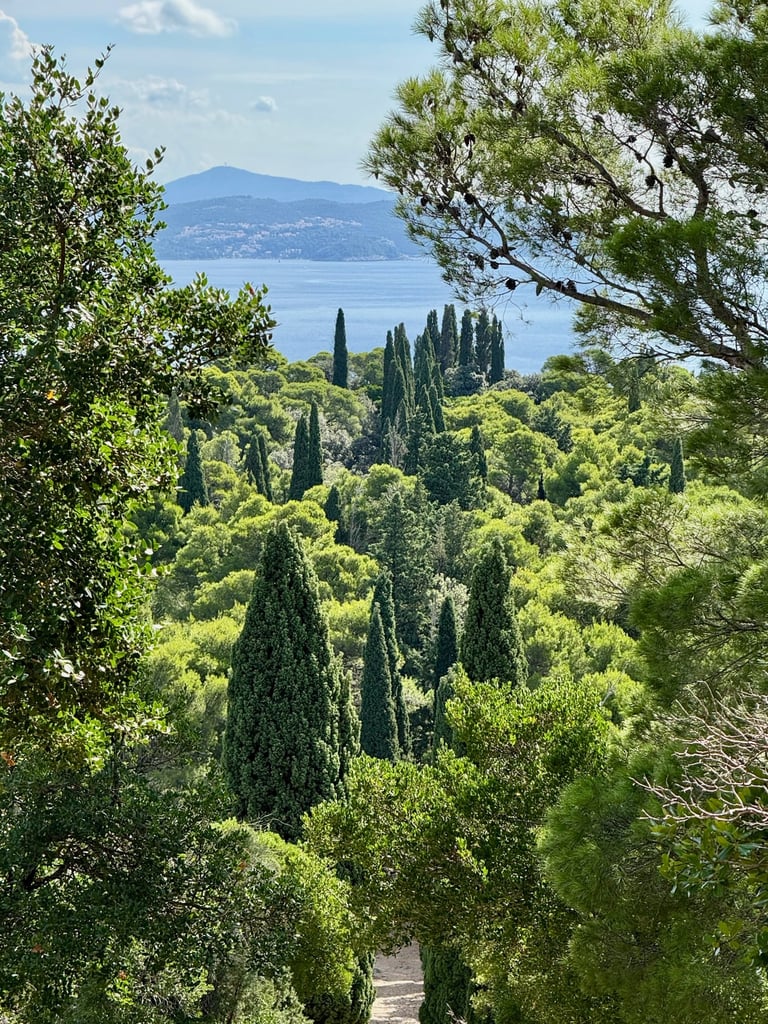













PS: An aviation nerd bucket list item...
Finally got to stay at a hotel 'on the field' and watch the traffic patterns.


Nasvidenje Zaenkrat
Zbogom Za Sada
Letswego.net
Send a comment
